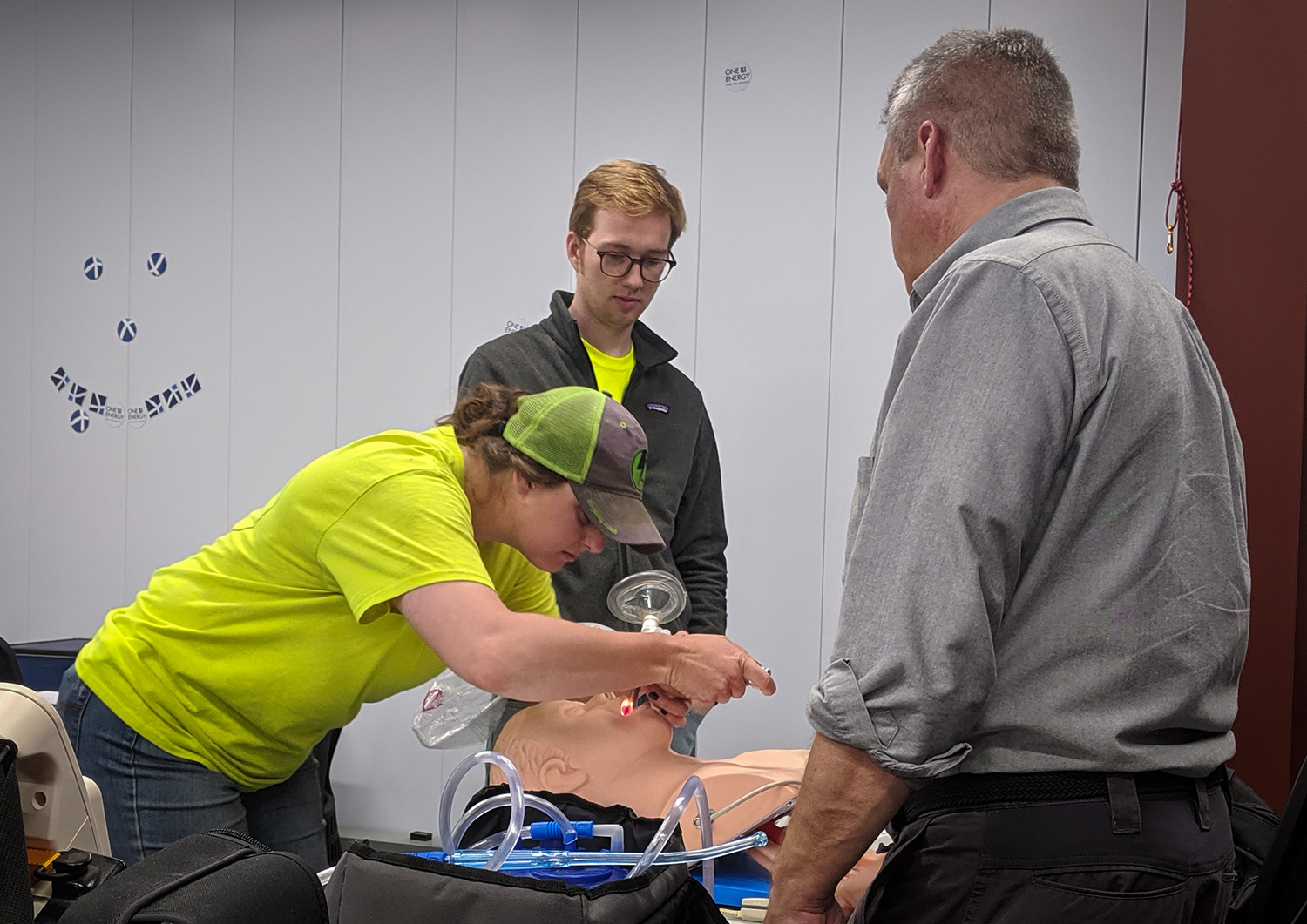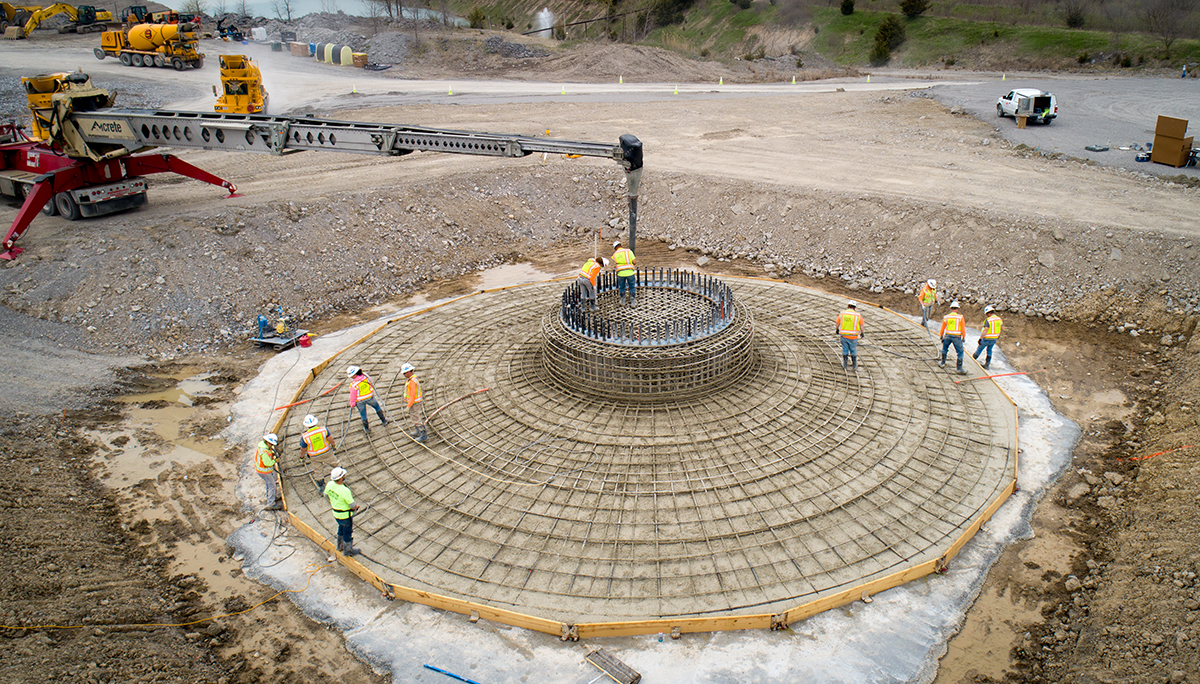CLASS AND HOMEWORK PROBLEMS

What does it take to be an engineer here at One Energy? We never stop learning.
On this page, find weekly questions to challenge how you think about the math and science of wind energy. Test your knowledge and then come back to check your answers to see how well you did.
2022 Wind Study Q&As
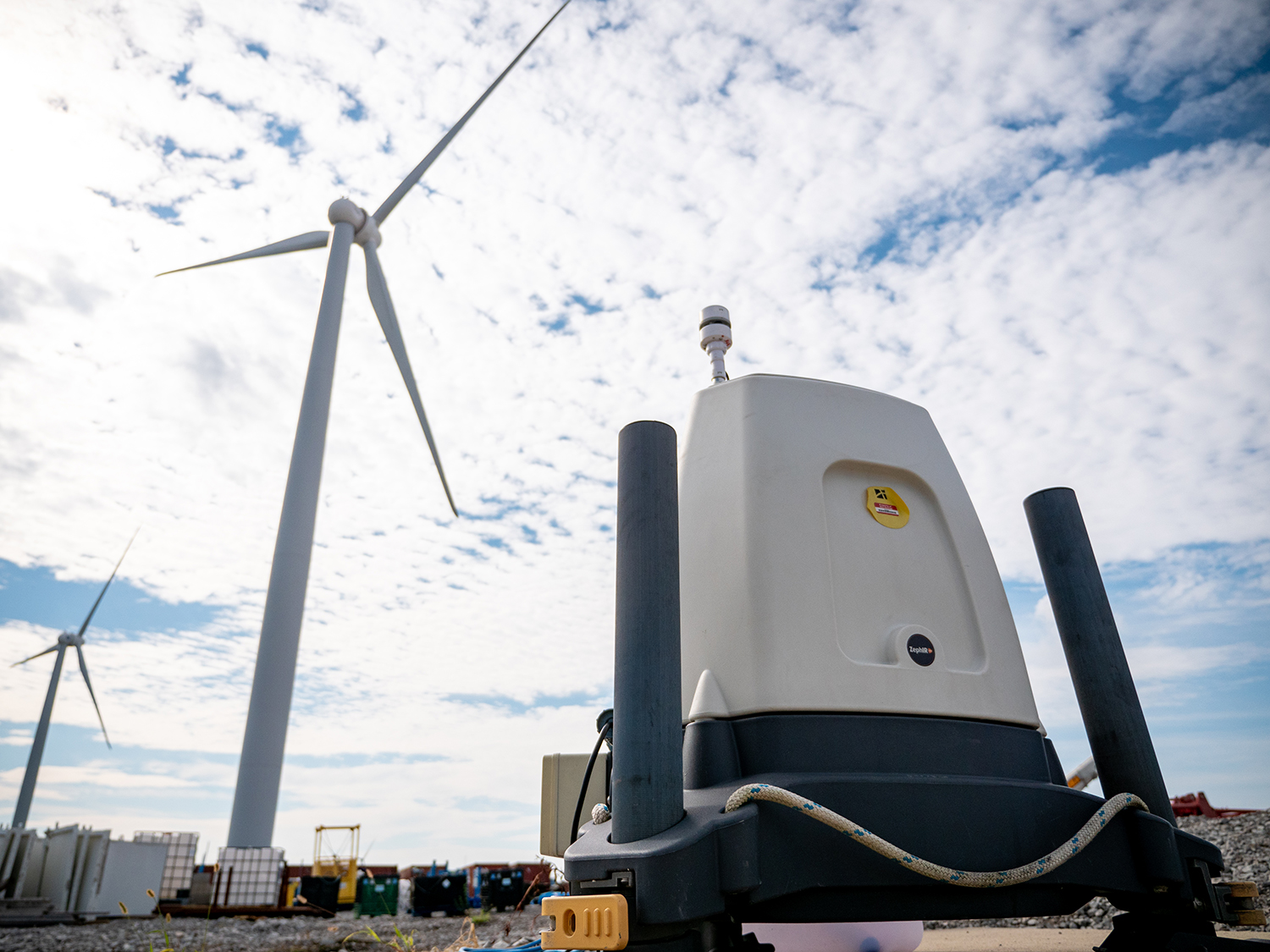
LiDARs
Ready to add a new acronym to your vocabulary?
At One Energy, we utilize a LiDAR (Light Detection and Ranging) unit to gather wind data. This unit uses an invisible laser to calculate the speed and direction of the wind. See if you have what it takes to solve this week’s problems, and don’t forget to check the answers!
Reflection & Refraction
Today we’re learning how light behaves through refraction and reflection. Some of these behaviors can turn light into a way to send messages. For example, the fiber optic cables One Energy uses to communicate with our turbines work by bouncing light through the cable to send messages.
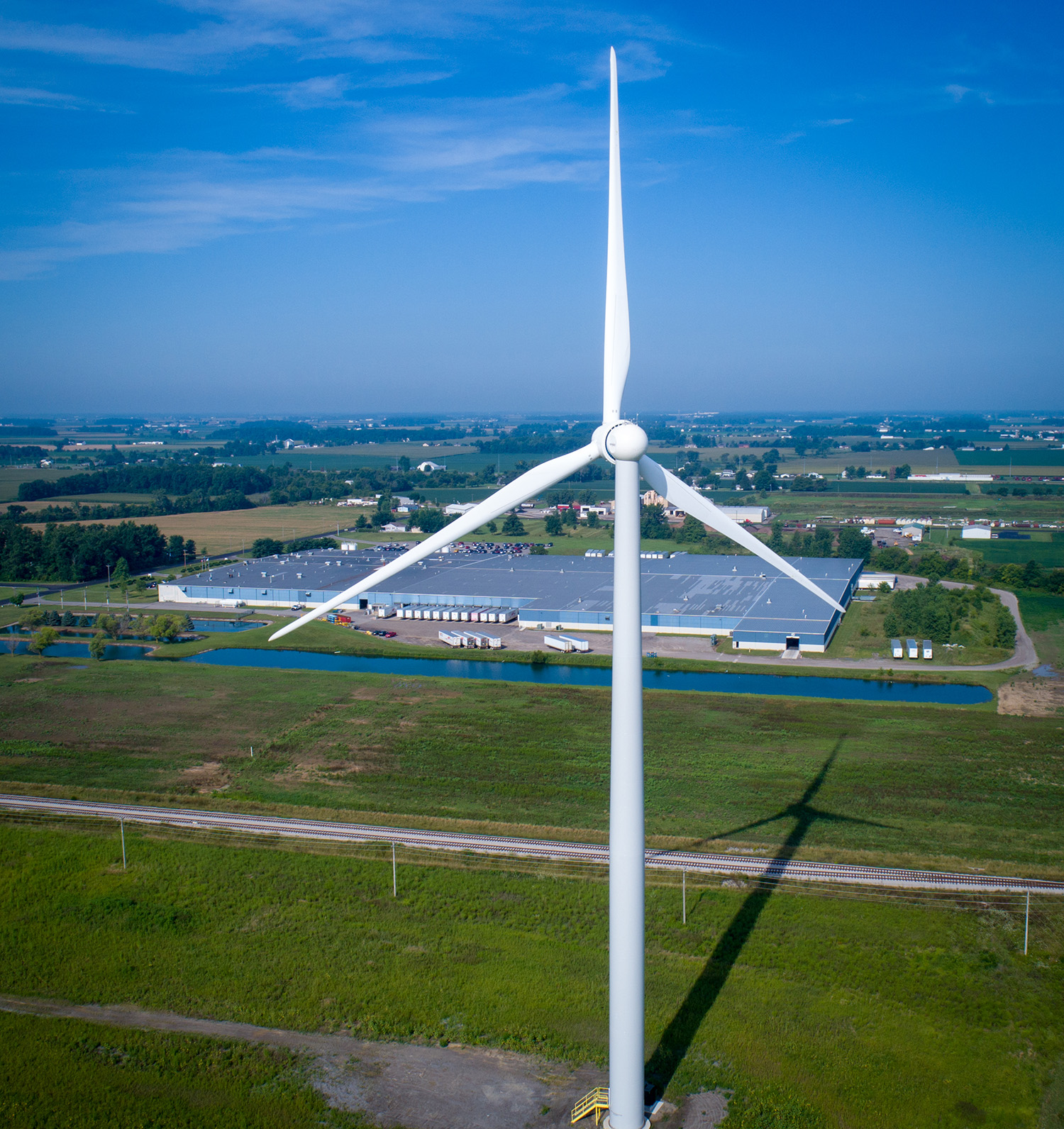
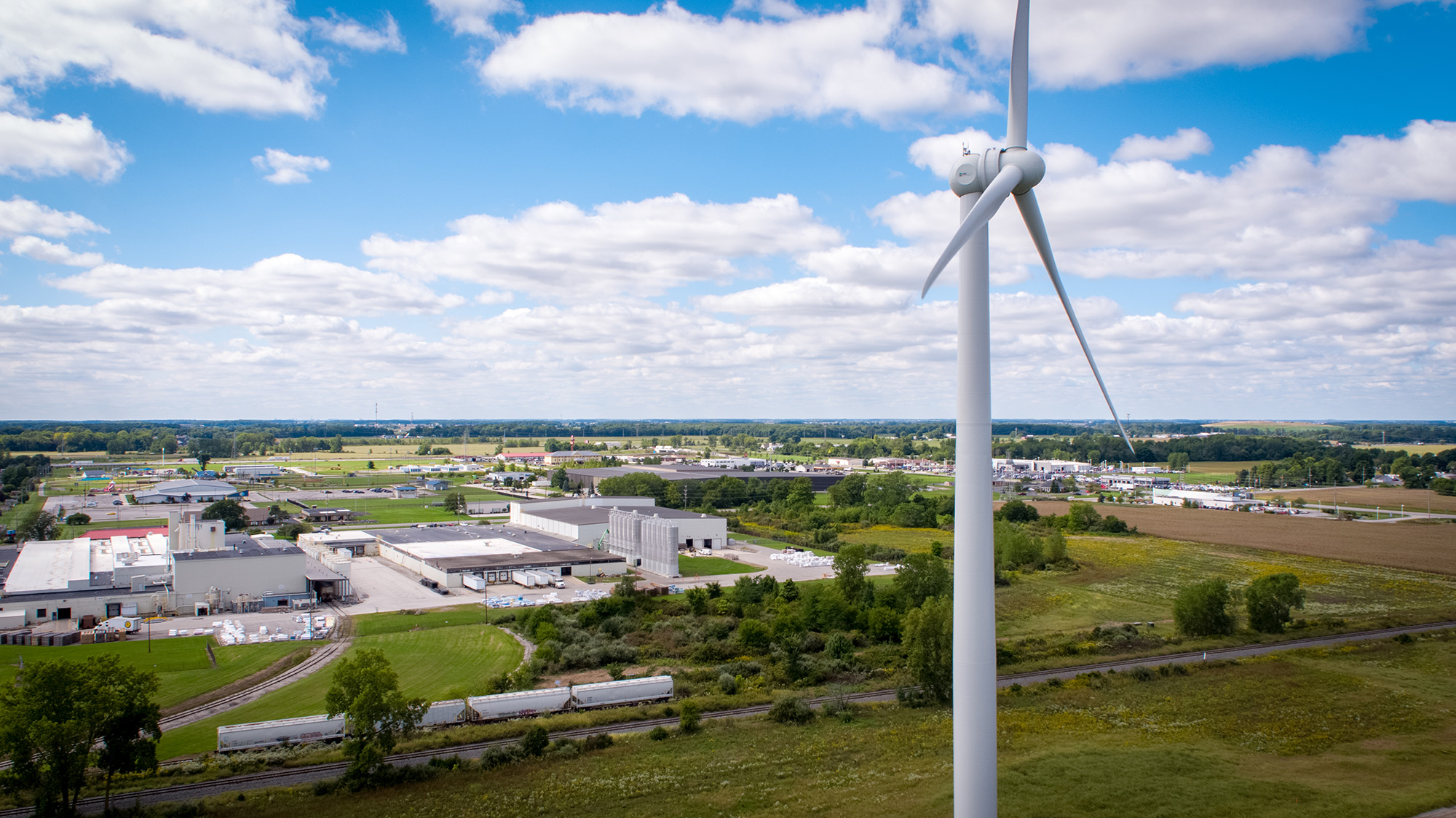
Imaginary Numbers
Get ready to use a little imagination! In this week’s Wind Study, we’re learning how helpful imaginary numbers can be when we use them to solve equations. One Energy engineers consider imaginary numbers all the time in their power engineering work, now you can join them!Reactance
Get ready to circle back to reactive power – a topic you may remember from the first Wind Study of this year. This time around we’re learning how capacitors and inductors create reactive power through reactance. See if you’ve got what it takes to solve this week’s problems!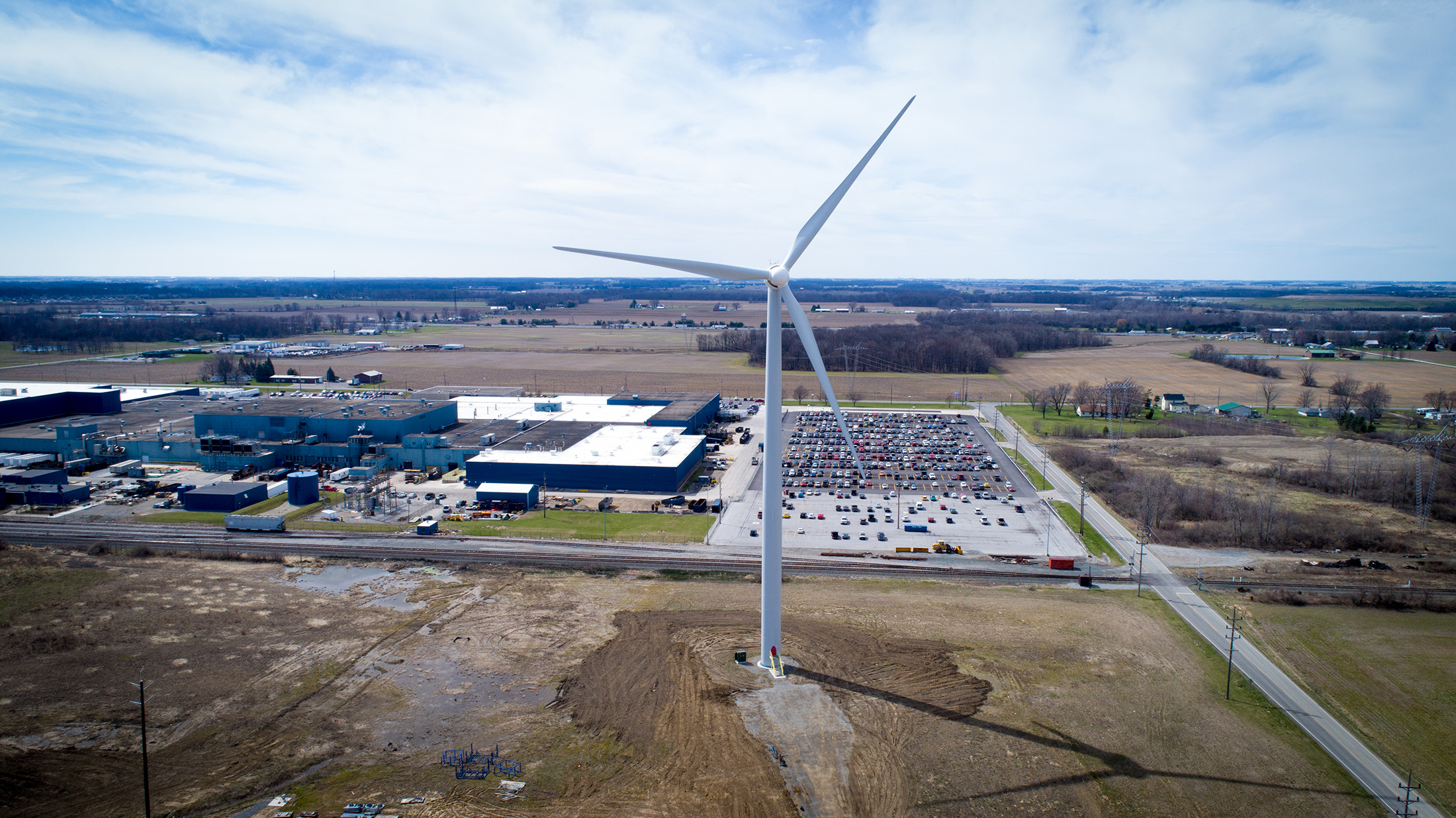
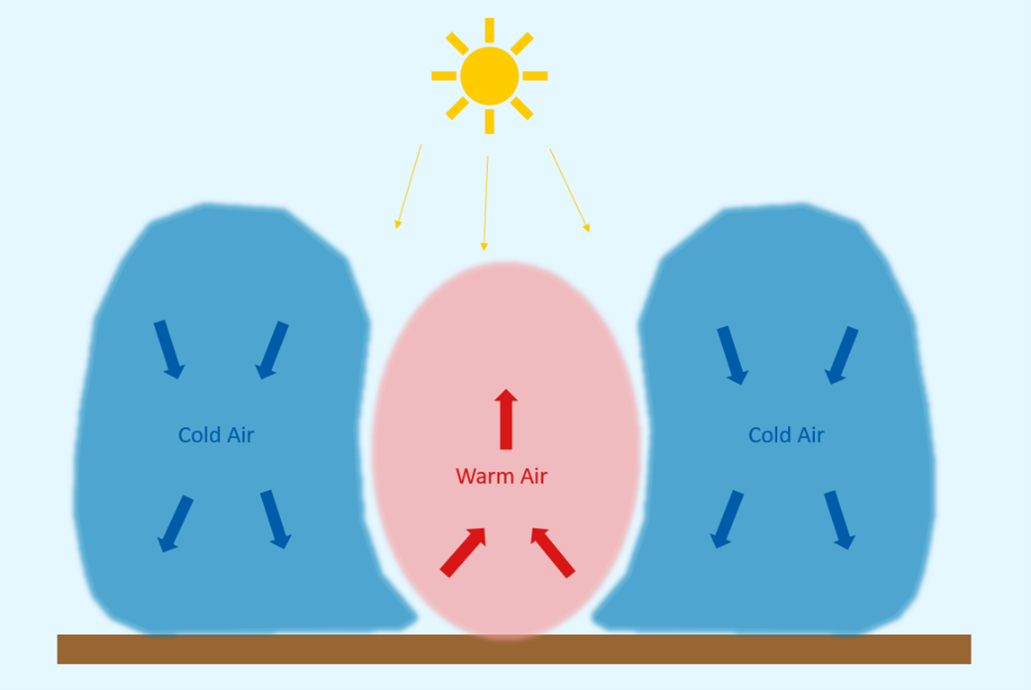
Gas Laws
This week’s questions are all about gas laws and pressure changes in an enclosed space. Learn how to find the molar volume, convert temperature units, and calculate the pressure.Encryption
At One Energy, we regularly use computers to solve problems and transfer data which allows us to communicate with the wind turbines and our customers. We use encryption to help keep this important information secure.
For this week’s Wind Study, we need your help decoding some encrypted messages!
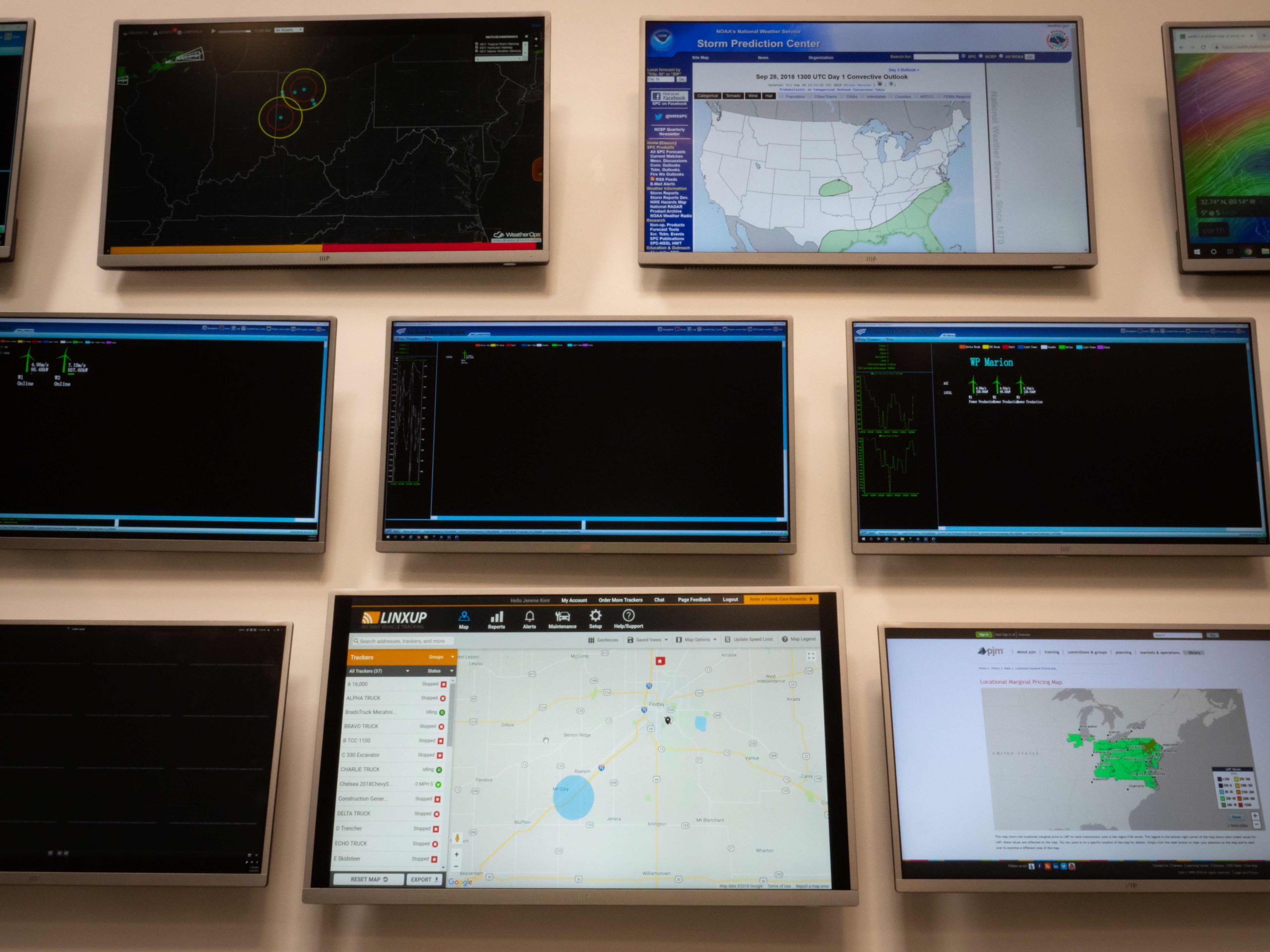

Drones & Center of Gravity
Get ready to fly into this week’s Wind Study as we discuss drones and cameras, plus explain how moment equations and center of gravity factor into flight safety.
See if you’ve got what it takes to solve this week’s problems!
Simple Harmonic Motion
Spring into this week’s Wind Study, which explains Hooke’s Law, simple harmonic motion, and yes, what springs have to do with constructing wind turbines.
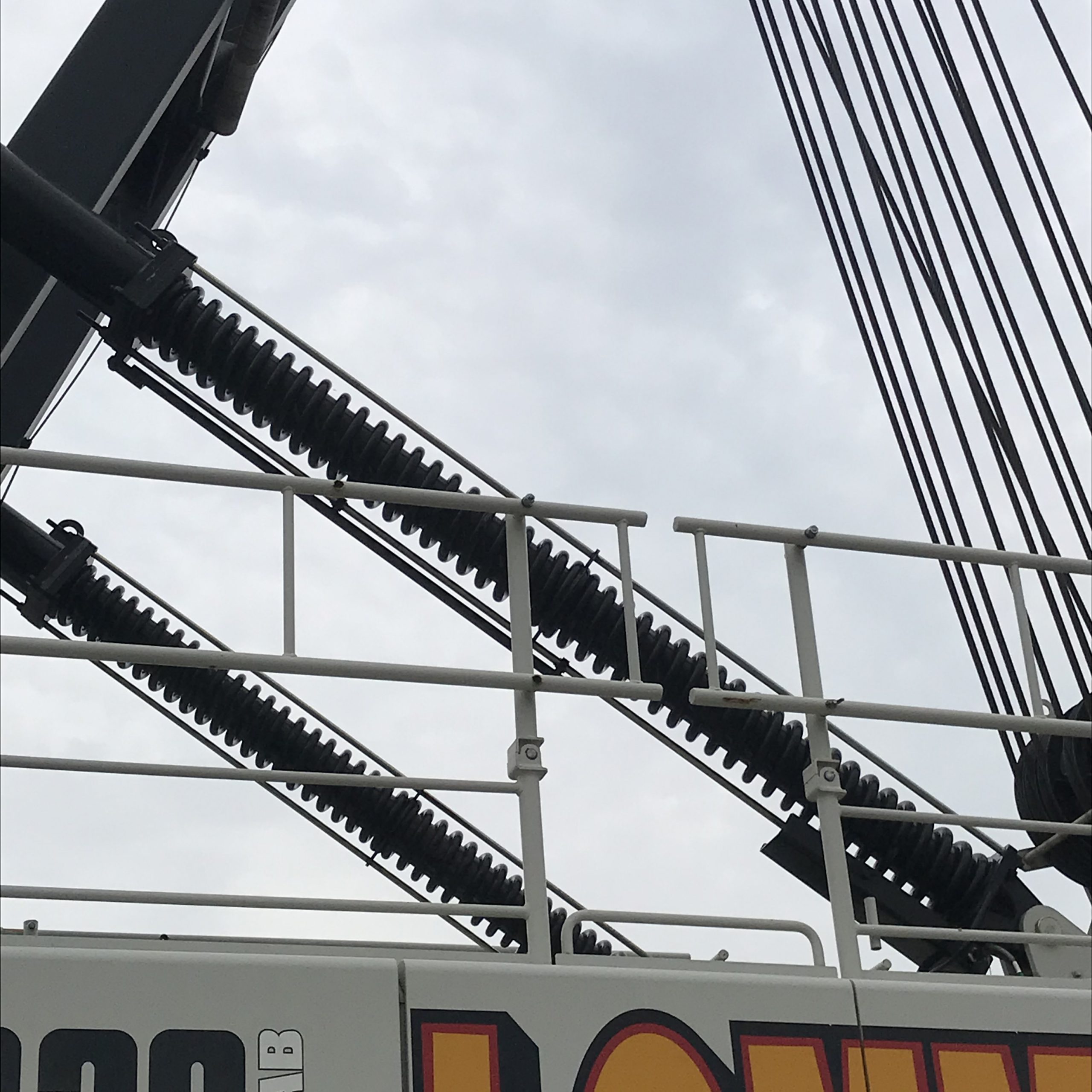
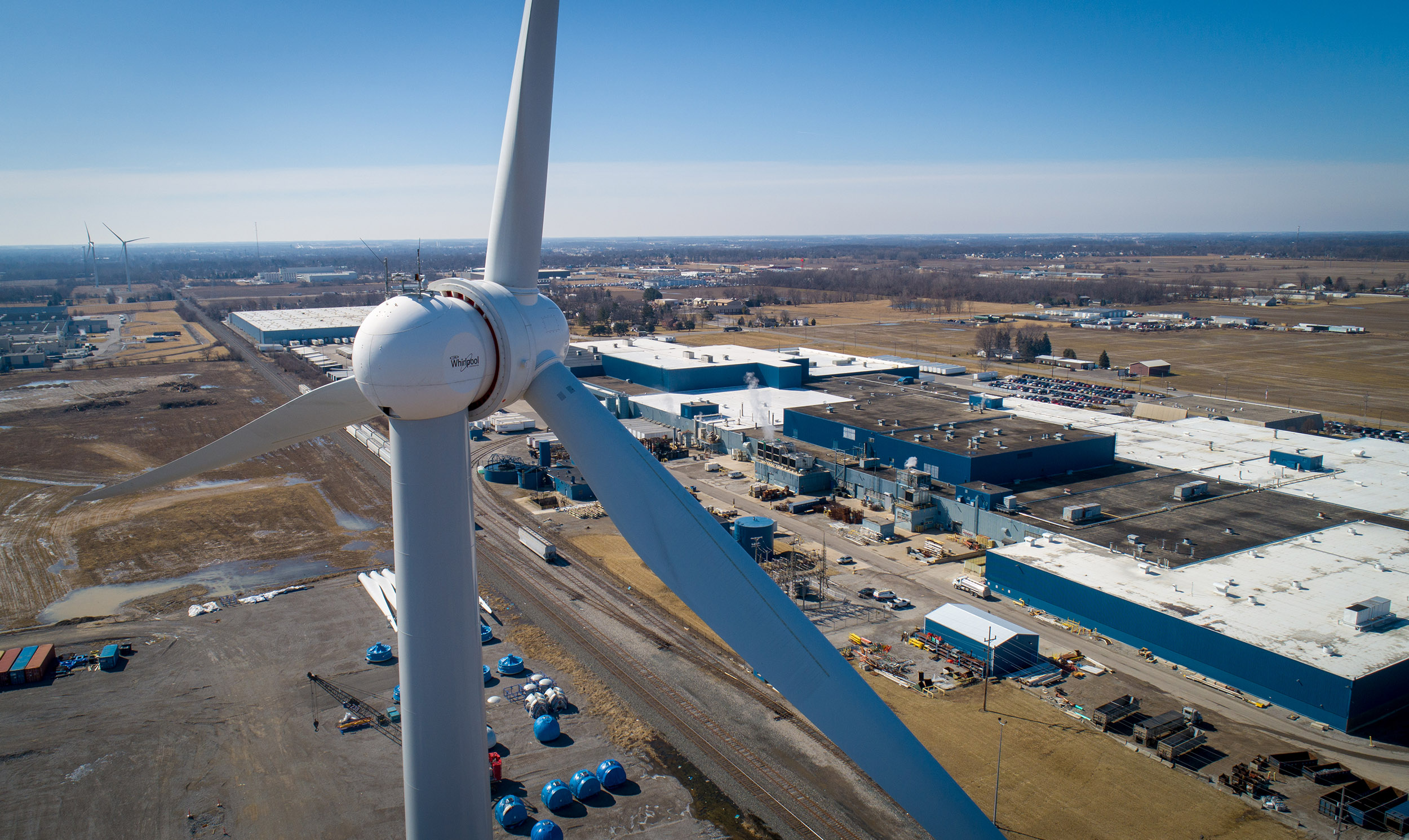
Reactive Power
Get ready to fly into this week’s Wind Study as we discuss drones and cameras, plus explain how moment equations and center of gravity factor into flight safety.
See if you’ve got what it takes to solve this week’s problems
2021 Wind Study Q&As
Change of Base
This week’s Wind Study is about computers! 💻 At One Energy, we use computers every day – to collect wind data using the LiDAR unit pictured below, to communicate with our turbines, and even to bring you this Wind Study assignment!
But have you ever wondered how computers process information? They don’t have brains like humans, so they’re programmed to “think” using only numbers (ones and zeroes, to be specific)! 💯
For this week’s homework, we’re asking you to translate computer sequences. Can we count on you to convert these numbers to be more easily understood by humans? 🔢

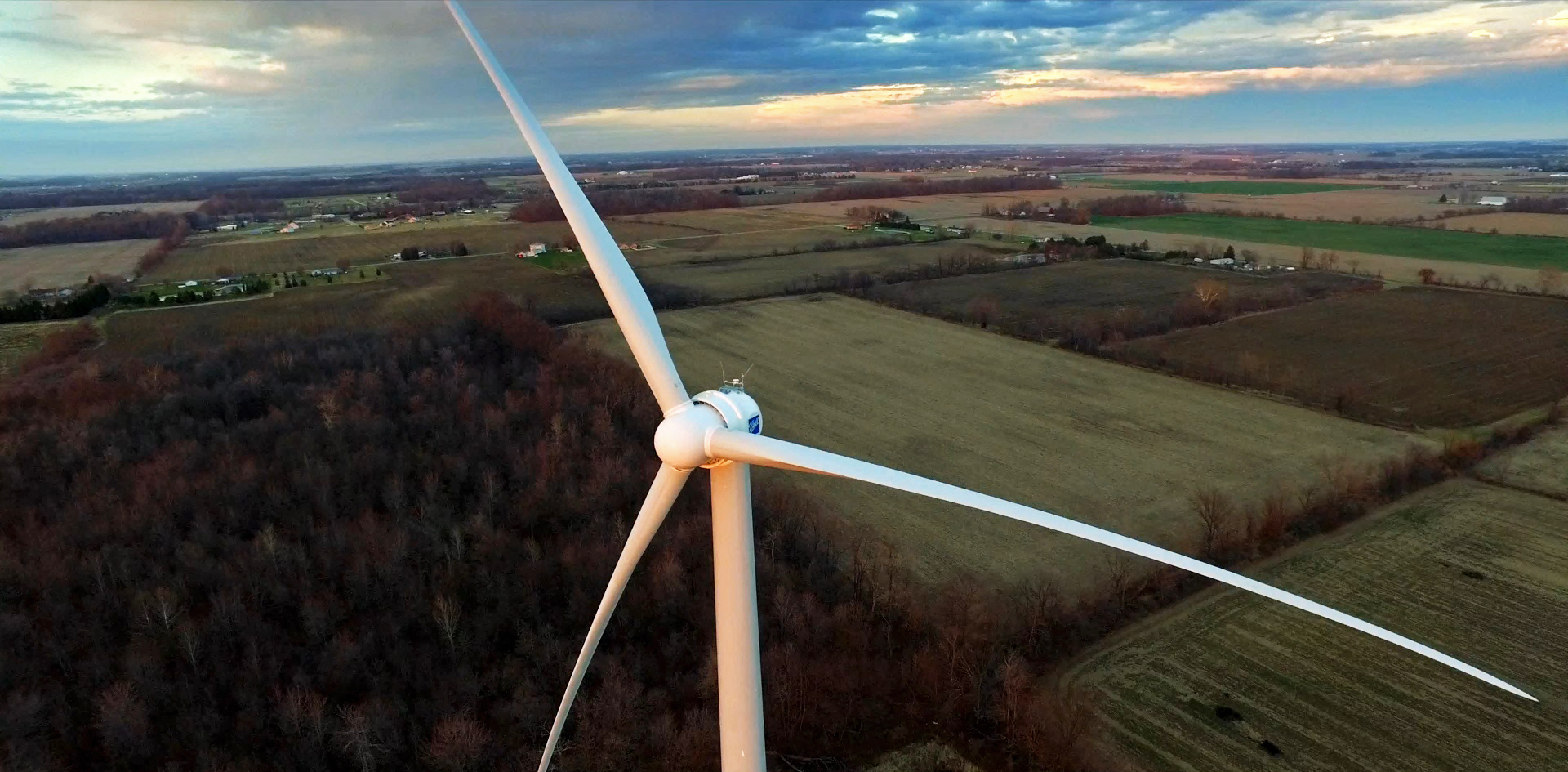
Land Geometry
When siting a Wind for Industry project, One Energy must make sure enough land is available near the customer’s facility, in order to install the number of wind turbines planned to help power their plant.
And for this Wind Study, we need your help! Complete the geometry problems to help us determine if more land should be purchased for the project!
Cabling
The cables One Energy uses may look a little different than what you’re used to seeing on a phone charger or toaster plug. 🔌
Our cables are BIG. That’s because they’re used to transfer energy from BIG wind turbines, into BIG facilities. Their size helps us put thousands of volts through these cables while they keep their integrity and stay safe while buried in the ground.
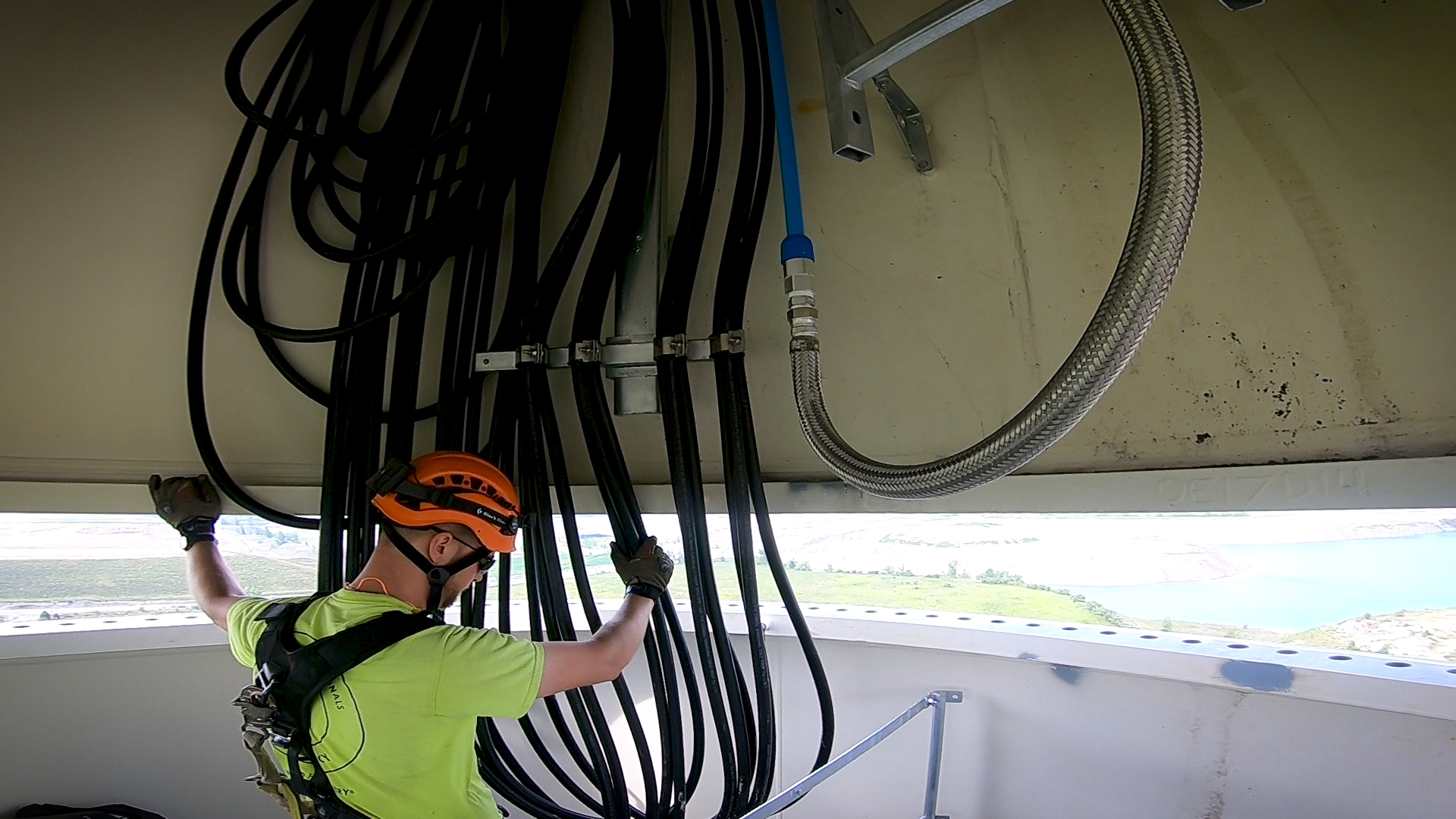
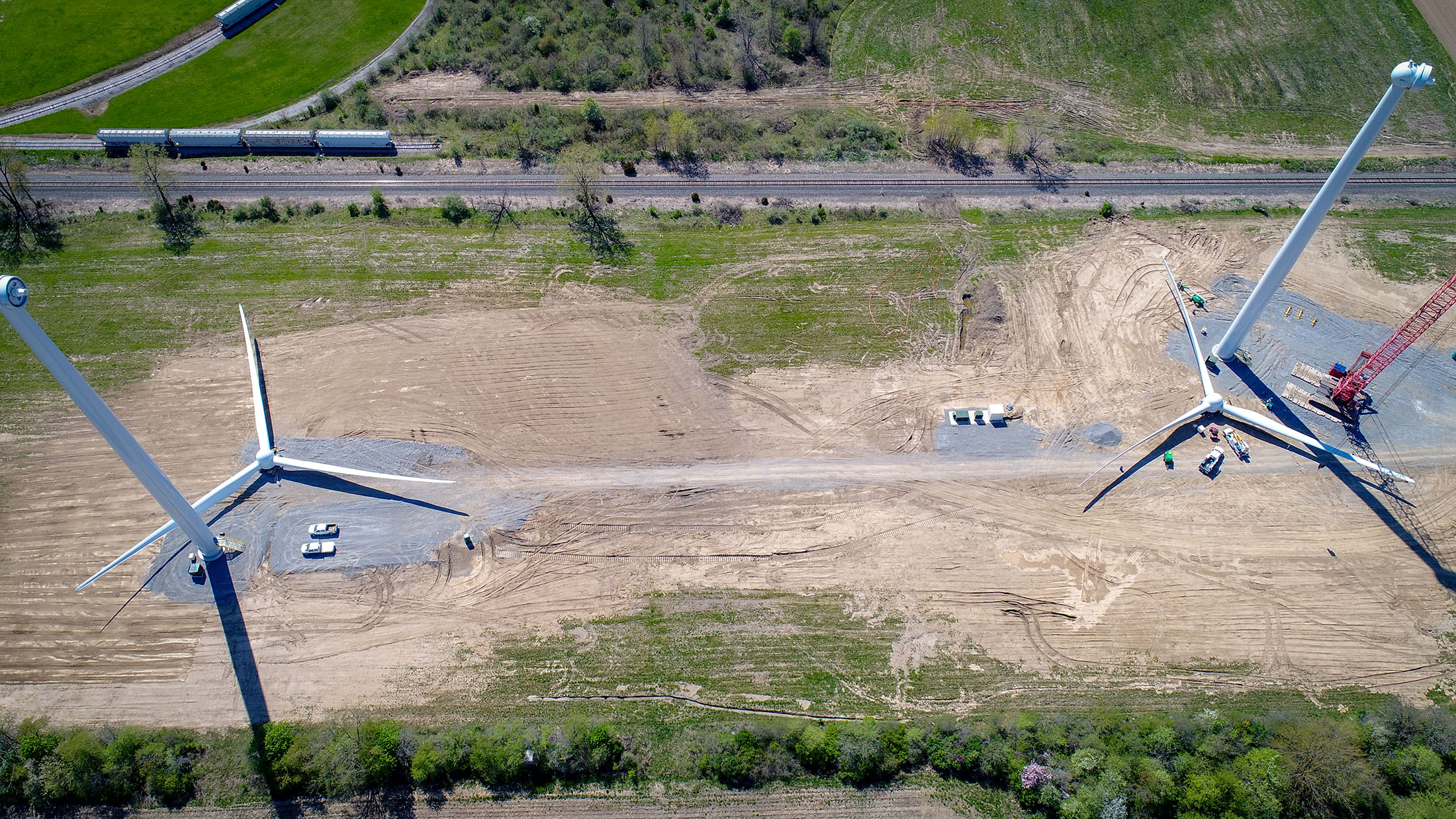
Drones Charge
One Energy uses battery-powered drones for photographing projects and for monitoring the blade health of our wind turbines. This requires drone pilots to pay close attention to the battery life of our drones any time they’re used! For today’s Wind Study, we need your help making sure we supply our drone pilots with enough battery power when inspecting turbine blades. You’ll have to consider things like wind speed and landing time to solve the problems in this week’s assignment!Trenching
When we talk about building wind projects at One Energy, it’s not theoretical. We’re “in the trenches” so to speak – doing all the work ourselves when planning, constructing, and operating Wind for Industry projects for our customers! Fortunately, however, we’re able to use machinery when it comes to actually digging trenches for our turbine cabling. This way, our technicians don’t have to be physically in the trenches, and it can remain a figure of speech 👌 Today’s homework questions are all about trenching, the equipment we use (like a skid steer, pictured below), and the dirt we save for backfill!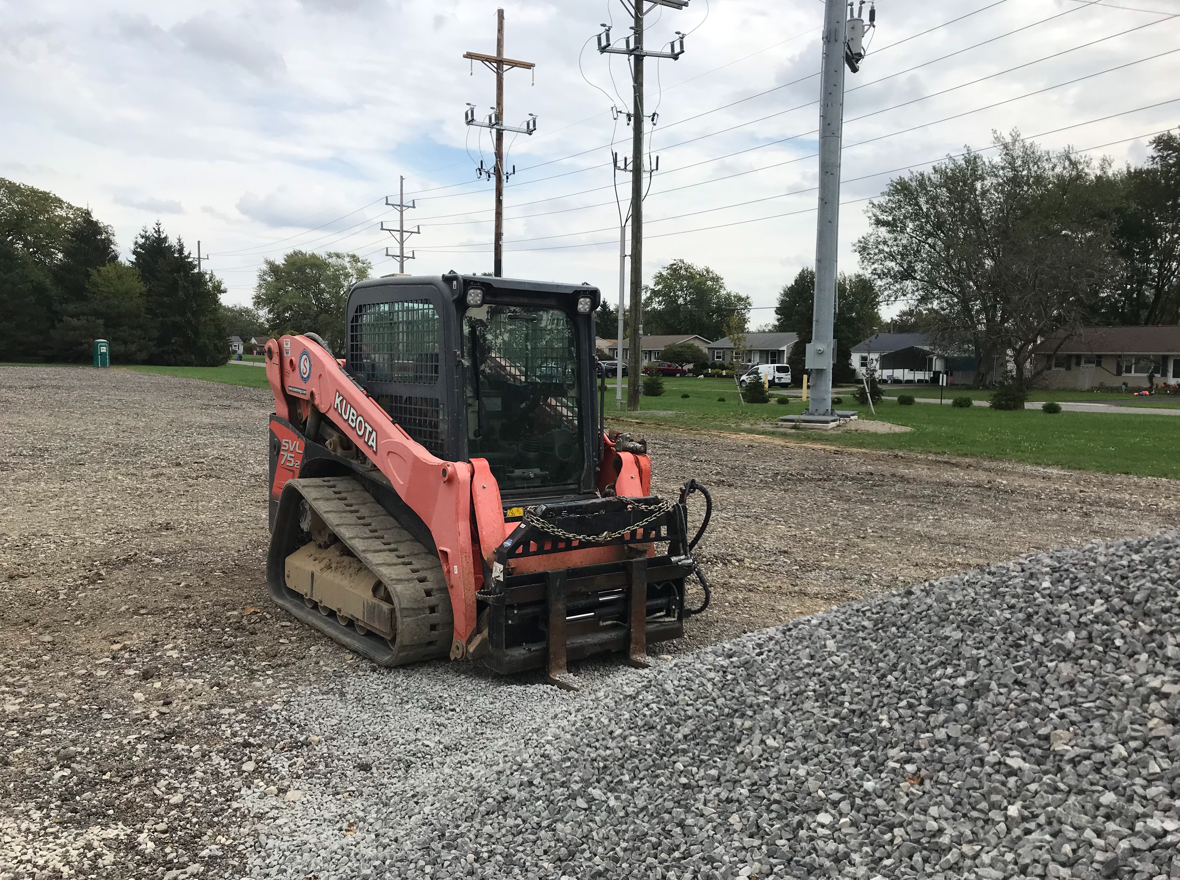
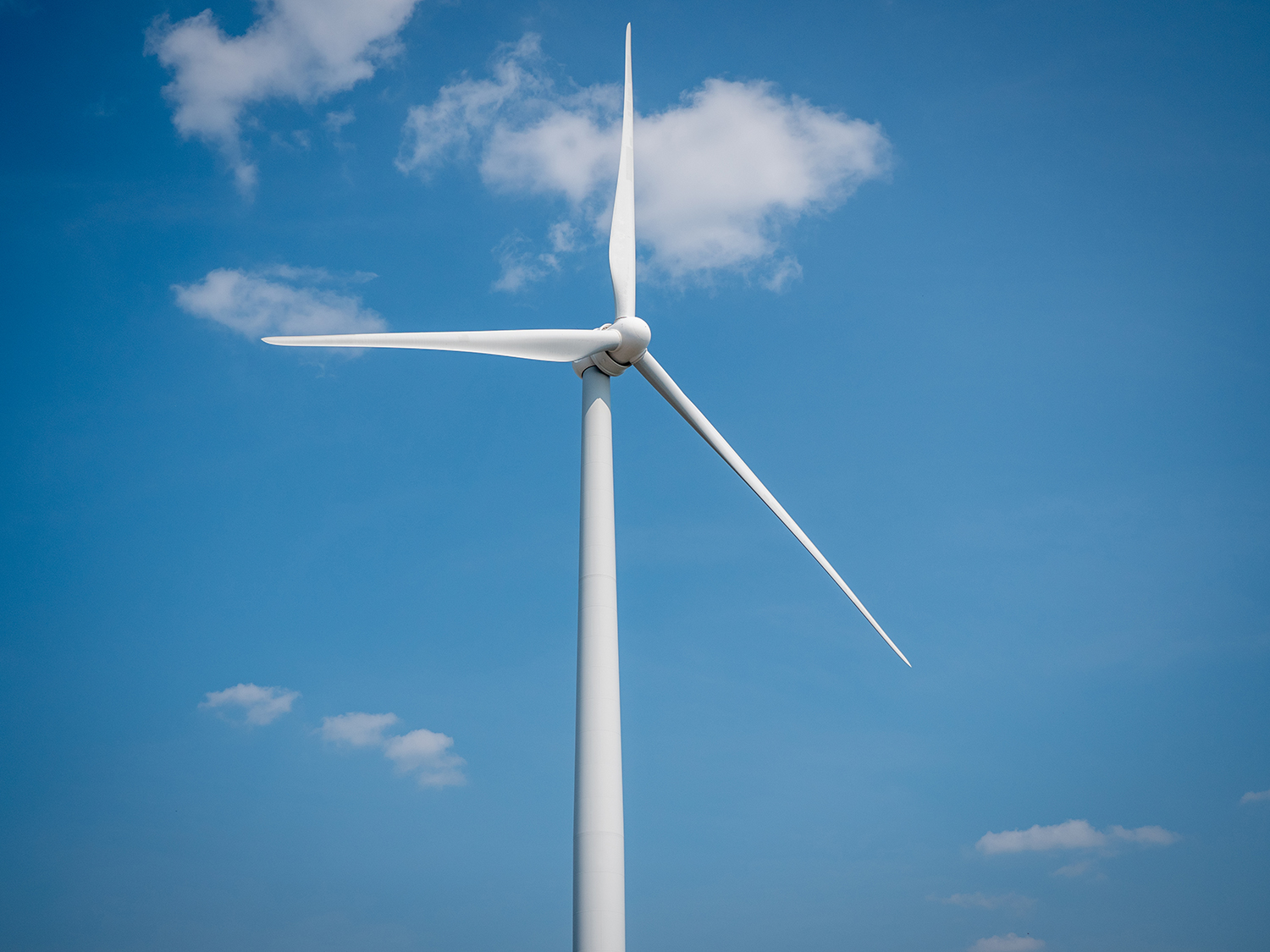
Microwave Paths
Today’s Wind Study is about microwaves! No, not the appliance used to heat up your food. A microwave is an electromagnetic wave with frequencies ranging from 300 megahertz to 300 gigahertz. These microwaves can be used to transmit information from one place to another by sending a signal from a transmitter to a receiver – with the ability to transmit information more than 30 miles away! This technology is very useful for transmitting information; however, it requires a path free of obstructions to successfully transmit data. Obstructions are typically avoided by placing the transmitter and receiver on towers. While this avoids low obstacles like trees and houses, taller structures such as buildings, cell towers, or wind turbines could cause an obstruction. To avoid interference, anyone who builds tall structures should conduct a microwave path study before the structures are built. This is part of our project planning process at One Energy – and part of this week’s Wind Study assignment!Blade Inspections
One Energy’s dedication to safety and maintenance does not stop at a certain height! Our wind turbines reach 405 feet tall. And while we can (and do!) inspect turbine towers by climbing on the inside, we inspect turbine blades using drone photography. (The same way the photo below was captured!) Today’s Wind Study homework question explains how and why we use drones to inspect blades – plus information on the data-storage tool used for the resulting images: SD cards!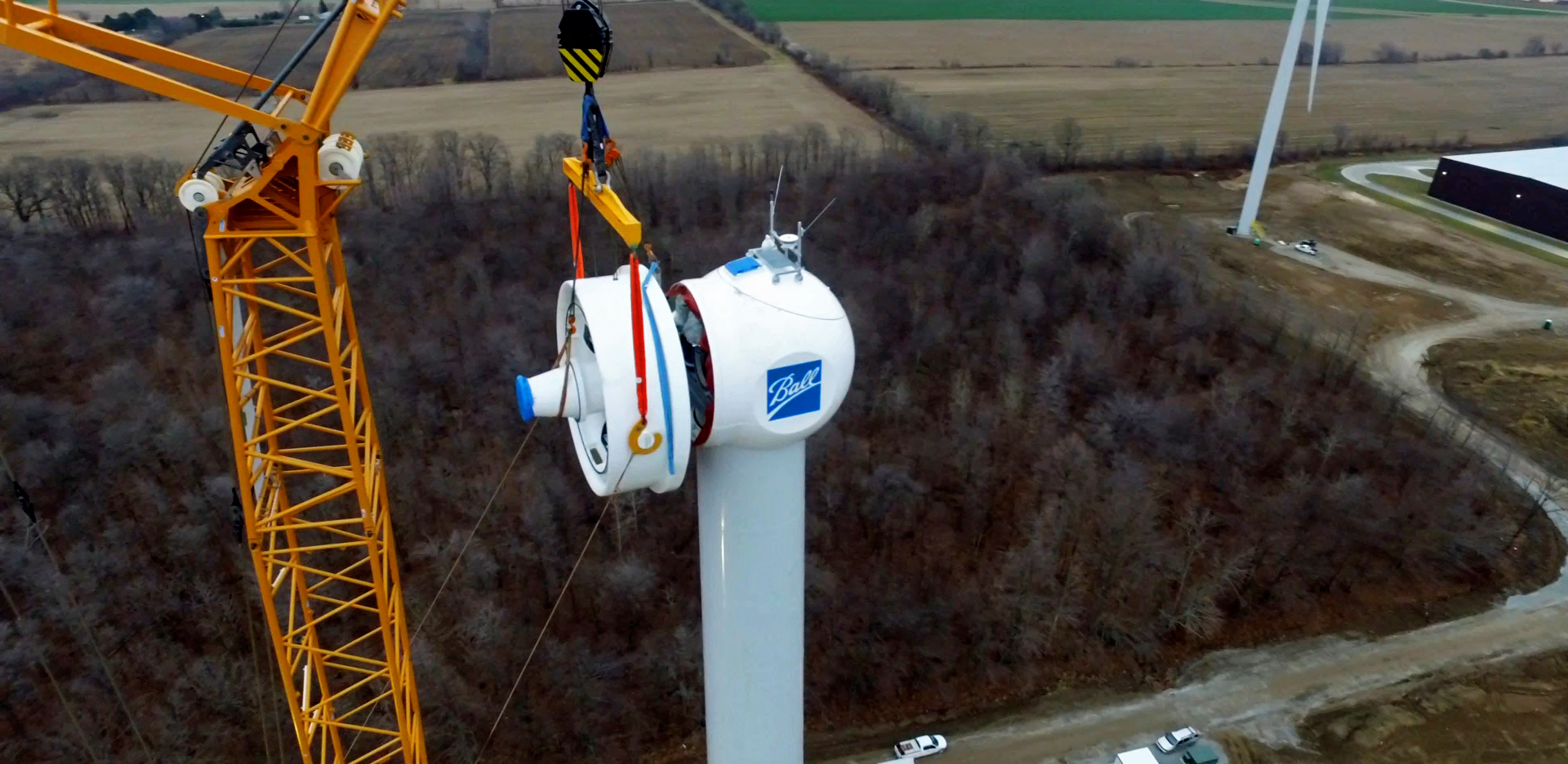
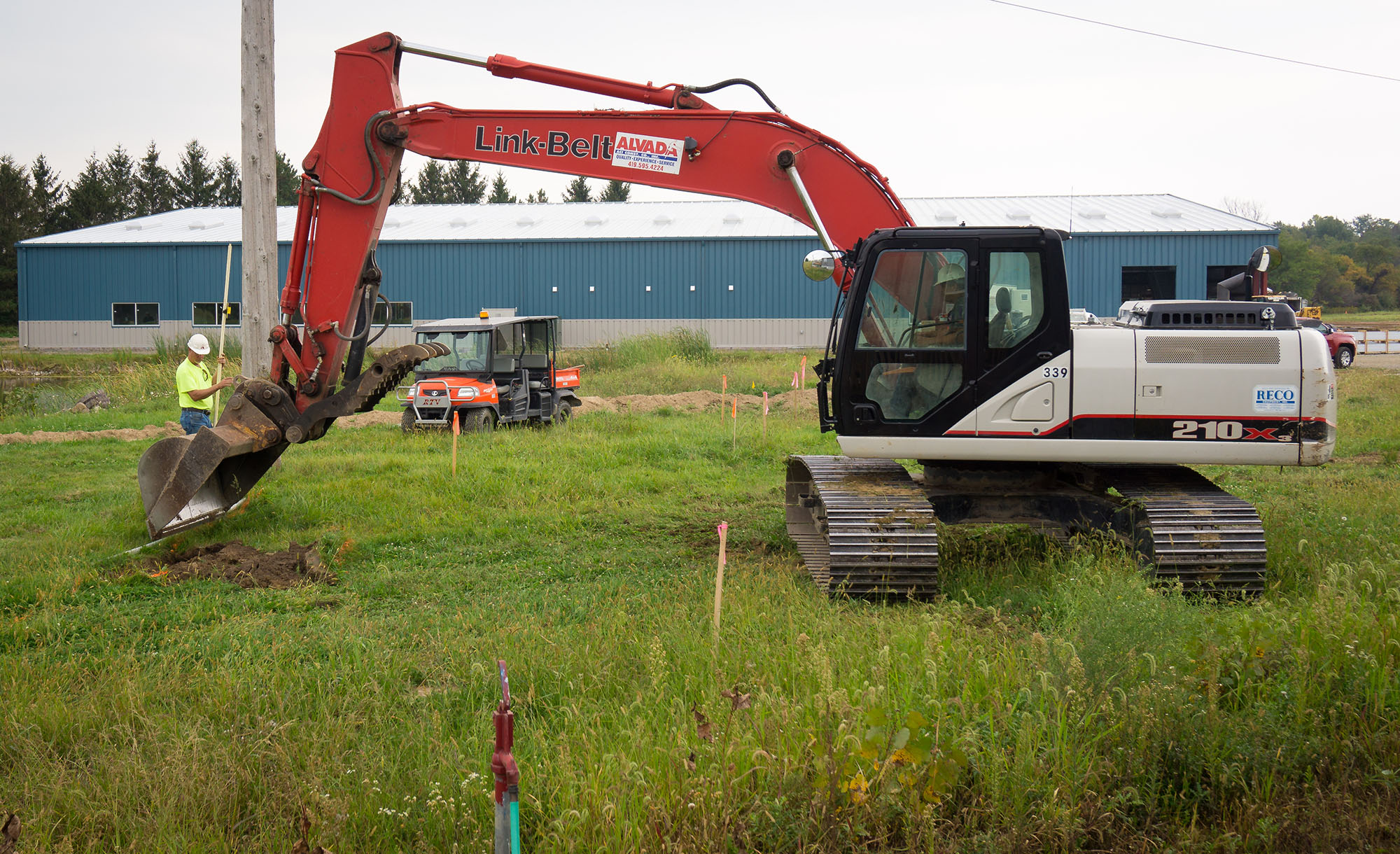
Hydraulics
Many machines at One Energy utilize hydraulics in some way. From lifts that help us in the construction field, to the steering of our vehicles that transport us from project to project – hydraulics are often at play!
A hydraulic system applies force to certain areas via pressurized incompressible fluids, located inside a container. An incompressible fluid is one that cannot be made denser by pushing it together (or compressing it!).
Buoyancy
This week’s topic is buoyancy. Can you solve these problems related to cargo ships and buoyant forces? Find out by downloading the questions and to check your answers!
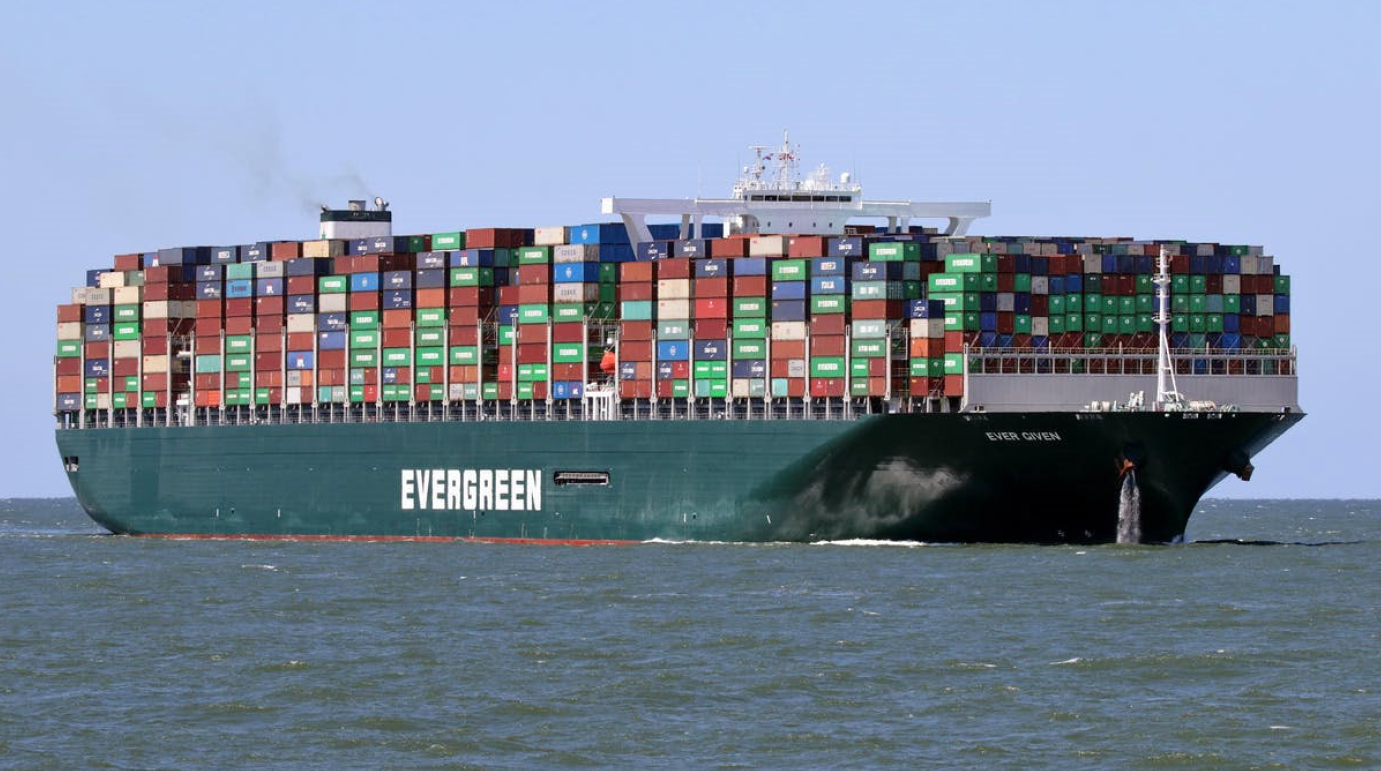
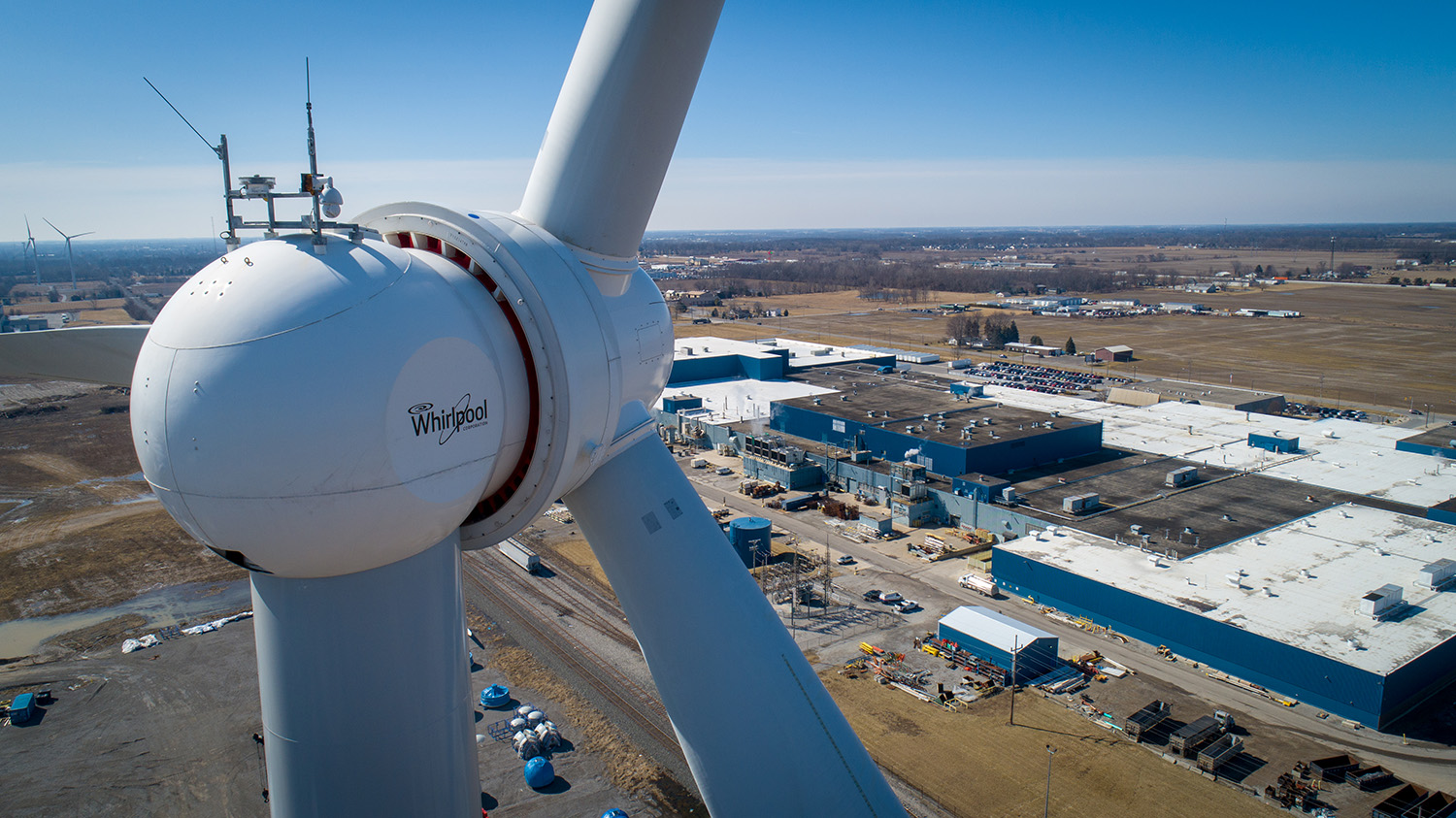
Pathfinding
Did you know that One Energy can communicate with our wind turbines?
We rely on a network of computers, all talking to each other back and forth. The turbines can send us vital information, such as the yaw position or the wind speed at hub height – and in return, our operators can ask the turbine to perform certain commands, like to shut off if a technician is planning to perform maintenance or a group is touring the project.
Having a fast line of communication between these systems becomes crucial, especially when operators need to make decisions based on real-time conditions. Being able to reduce and minimize the time it takes to exchange critical information means designing networks with minimal delays.
These wind study questions focus on calculating the amount of delay in a network of computers, and how to choose the best possible setup to reduce any information lag.
Wind Speed
Designing a Wind for Industry project requires assessing the wind resource at the project location. This tells us the wind speed and direction in that area, which allows us to calculate how much energy the project can generate.
Use the equations provided in this Wind Study homework question to calculate anemometer rotation time and wind speed. Then come back to check your work!
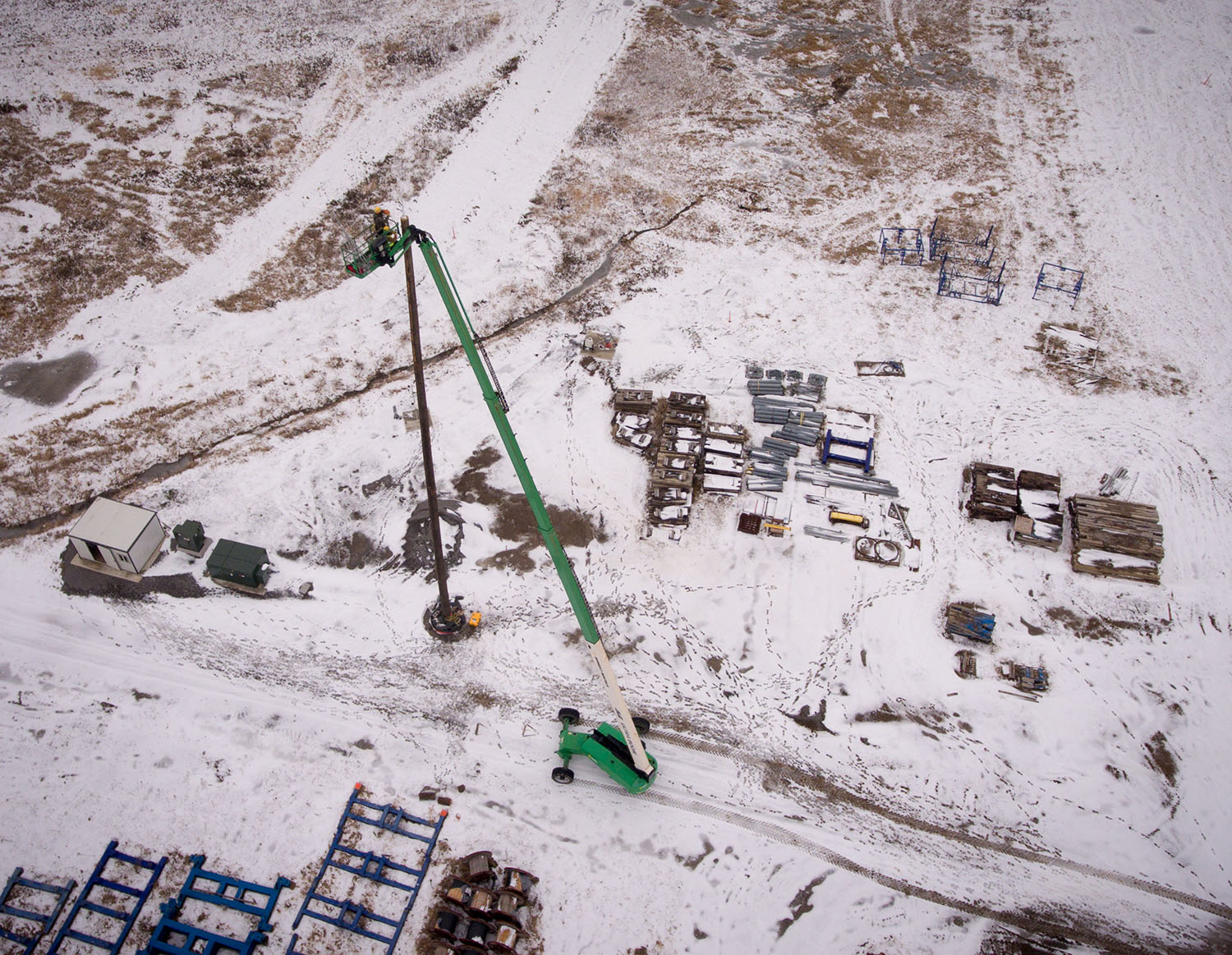
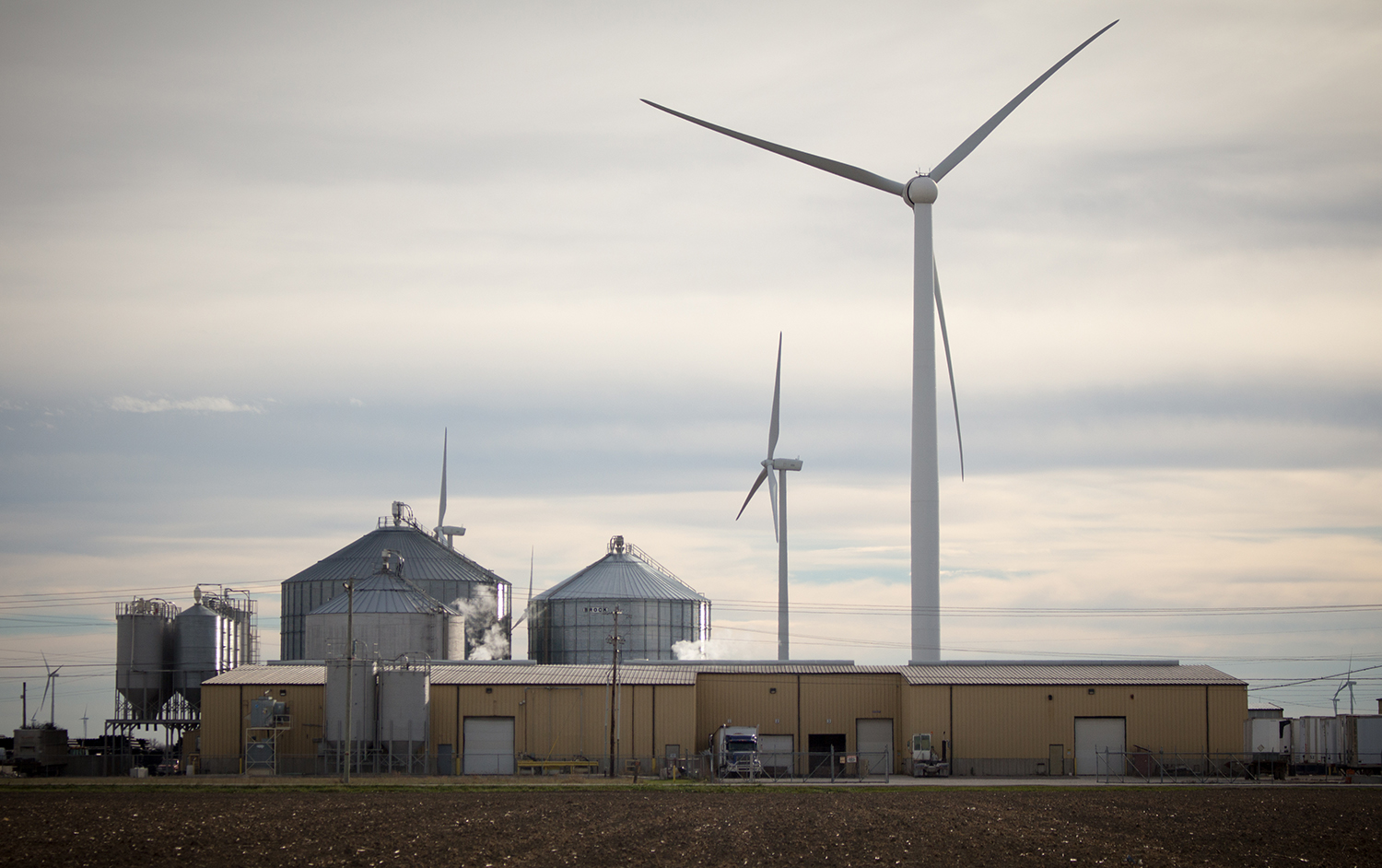
Yaw
Ever wonder how wind turbines keep up with changing wind flows?
Our wind turbines rotate, or “yaw,” to face directly into the wind and capture it more effectively. A turbine’s yaw is an axis of rotation that changes the direction the turbine is facing.
This week’s homework asks you to calculate how much energy a yaw consumes, the energy output of the turbine after the yaw, how much energy the turbine would have produced if it didn’t yaw, and the difference between the two scenarios.
Potential Energy
The technician in the photo below has HUGE potential… potential energy that is!
We know that One Energy’s wind turbines convert wind energy into electrical energy – but what do they have to do with gravitational potential energy? Find out in today’s Wind Study!
This week’s homework asks you to calculate the potential energy of a One Energy technician standing on top of a wind turbine tower, carrying all their tools and safety equipment.
Then, use the same mathematic equation to determine the gravitational potential energy of the turbine tower itself!
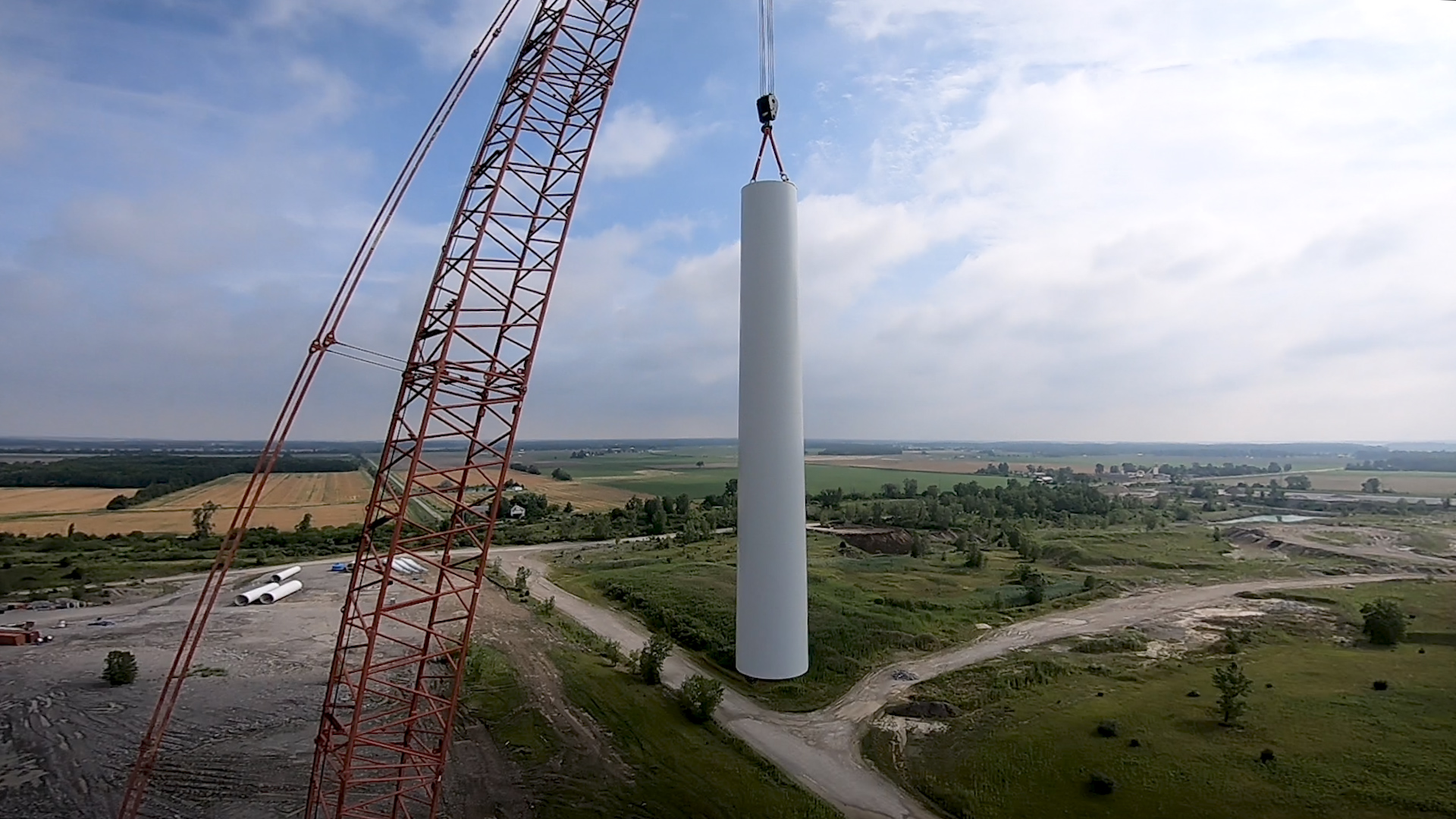

Torque
This series of sample homework questions focuses on concepts of force and torque – what do these have to do with wind turbines? Read on to find out.
Wind turbines are designed to last a very long time and to withstand large amounts of force. This means the parts used to construct the turbines must be incredibly sturdy – from the large tower sections to each of the individual bolts.
Torque is applied when tightening the bolts during turbine construction (as shown in the graphic below). In this week’s Wind Study, we need your help determining torque output, as well as settings needed on our pneumatic torque wrench (the tool used to torque bolts).
Minimum Area, Pressure
For this week’s homework questions, we want your help figuring out how to properly support our cranes!
When erecting wind turbines, One Energy considers more factors than just the weight a crane can lift. It is also necessary to consider the pressure the ground beneath the crane can support! This is called the ground bearing capacity, and we use something called a crane mat to avoid exceeding it.
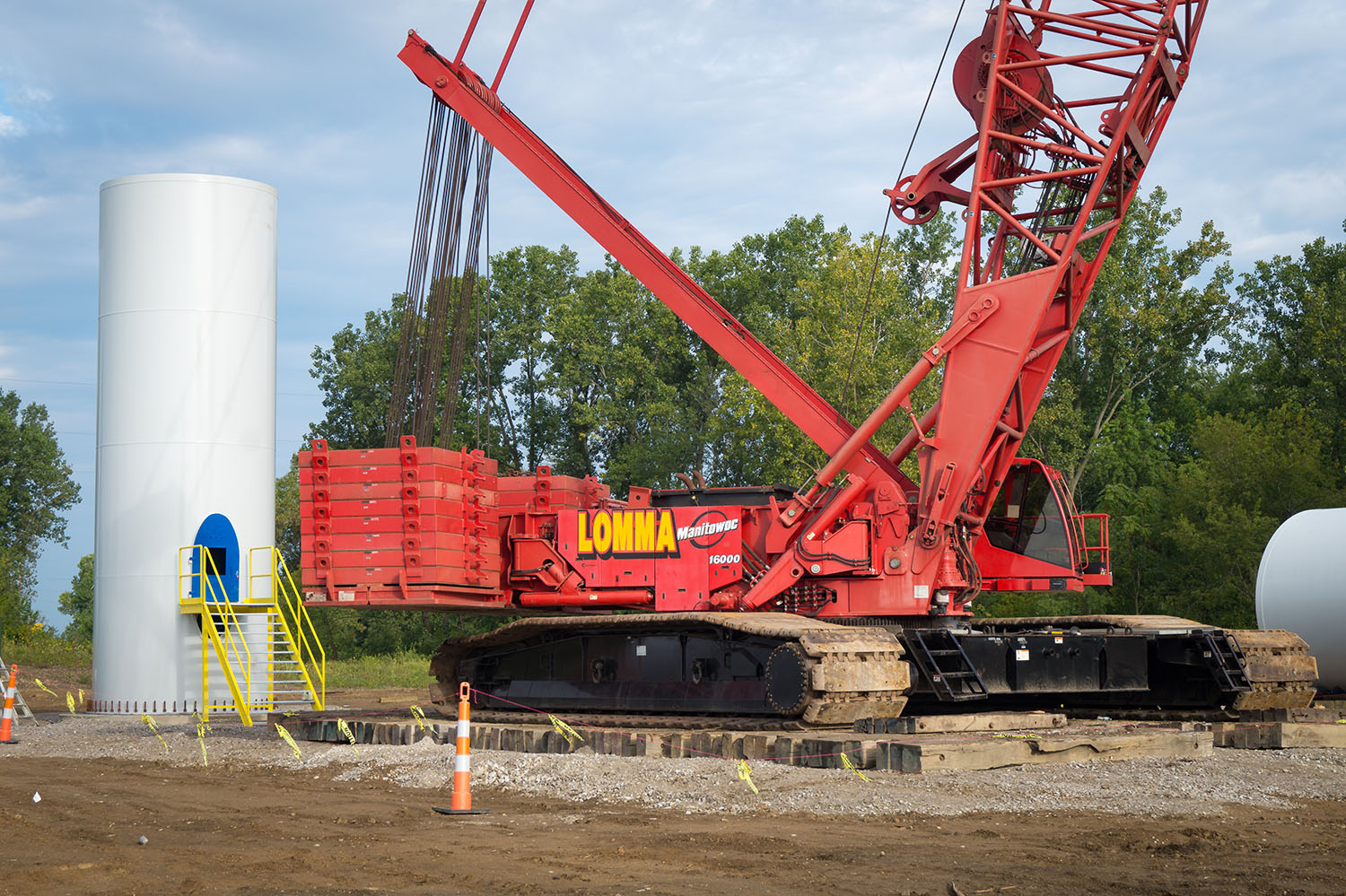
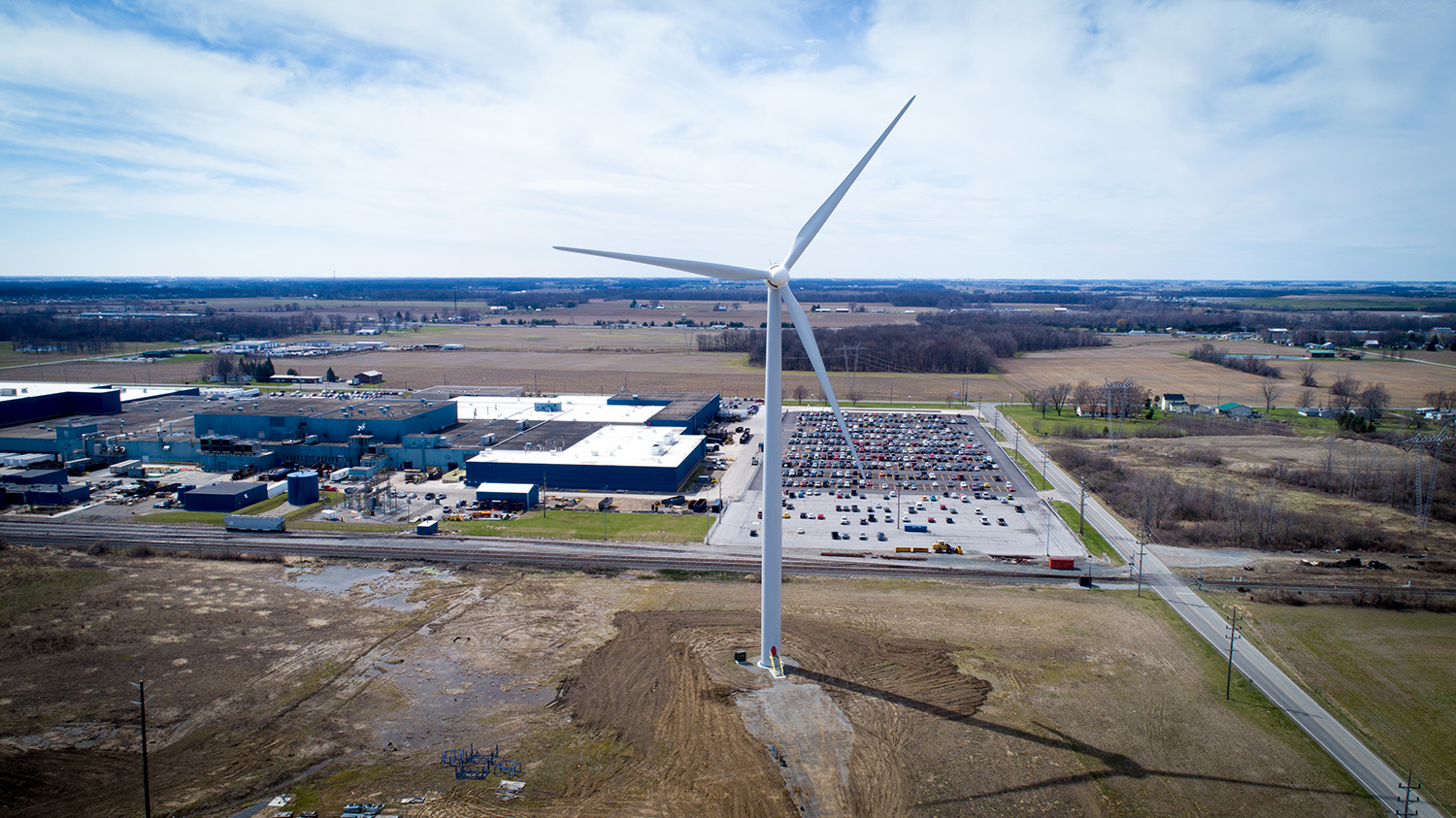
Transformer
Ever notice the metal cylinder on the utility pole near your house? That’s called a transformer!
Transformers are used to lower the voltage of the power that comes from the electric grid (in this case, so that the electricity can be used in your house).
At One Energy, we also use transformers, but the industrial plants that One Energy helps power require a much higher voltage than a house. To supply this high voltage to our consumers, we must increase the voltage using a step-up transformer.
These rectangular transformers are much bigger than the ones found on the utility poles near your house (as you can see in the picture below), and we use them to step up the voltage of the wind turbine to the grid voltage.
Transformers use two coils of wire and the principle of electromagnetic induction to change the voltage. The coils are wrapped around the same core, but each coil has a different number of loops (called turns) that create the change in voltage.
Today’s Wind Study homework questions use the Turns Ratio to determine the correlation between the number of turns in each of the coils and the change in voltage the transformer produces.
Wind Profile
Understanding wind speed is a crucial part of turbine siting – that is, determining where a turbine will be geographically placed for a wind energy project. Wind speed on the ground or surface level is often different than the wind speed at “hub height” – the height at a given turbine model’s hub. (Remember that the hub is the component that holds together the turbine’s blades.) In this week’s wind study, we’re exploring the relationship between wind speed and height, as well as the “Wind Profile Power Law,” using graphing and equations.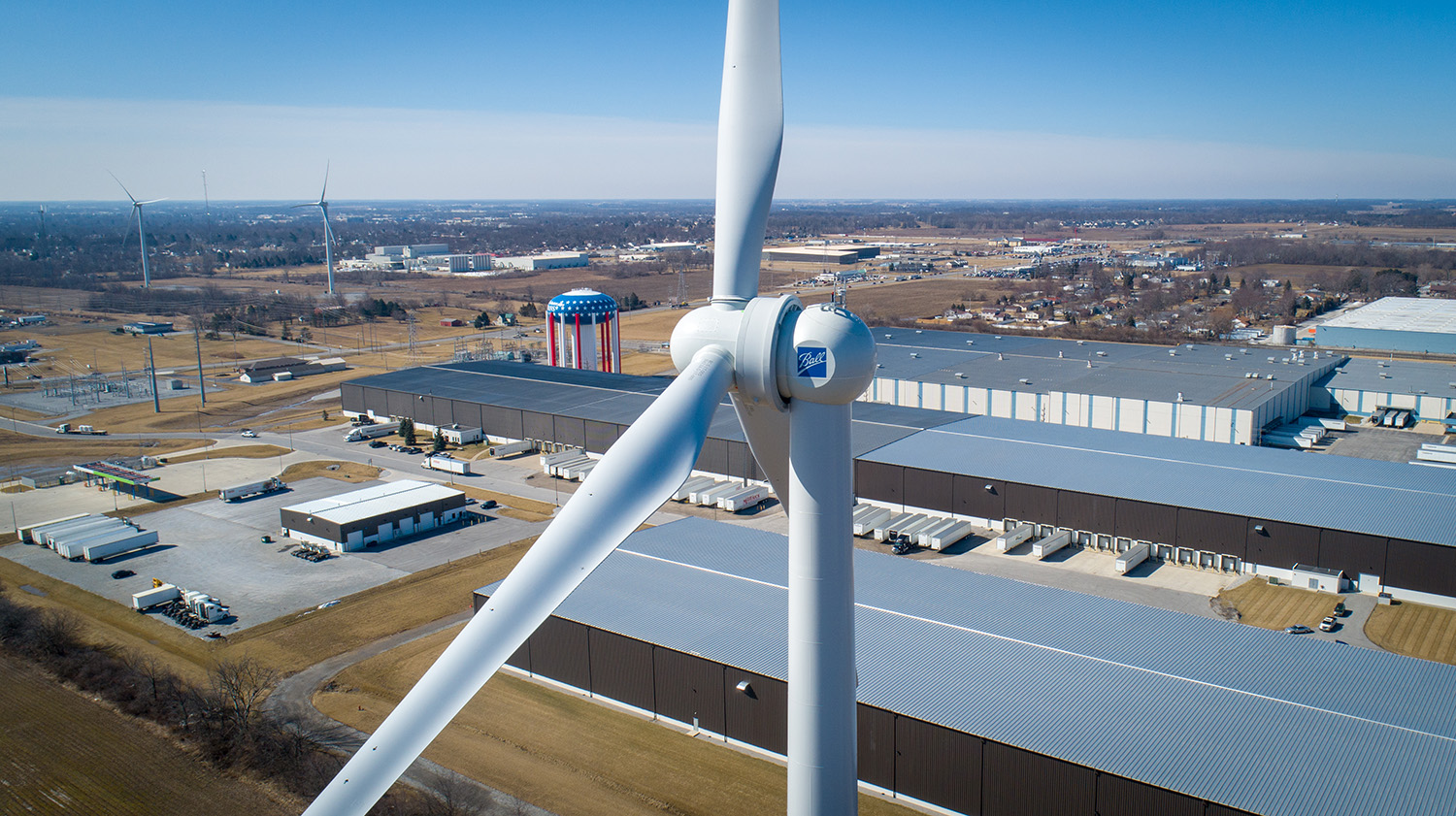
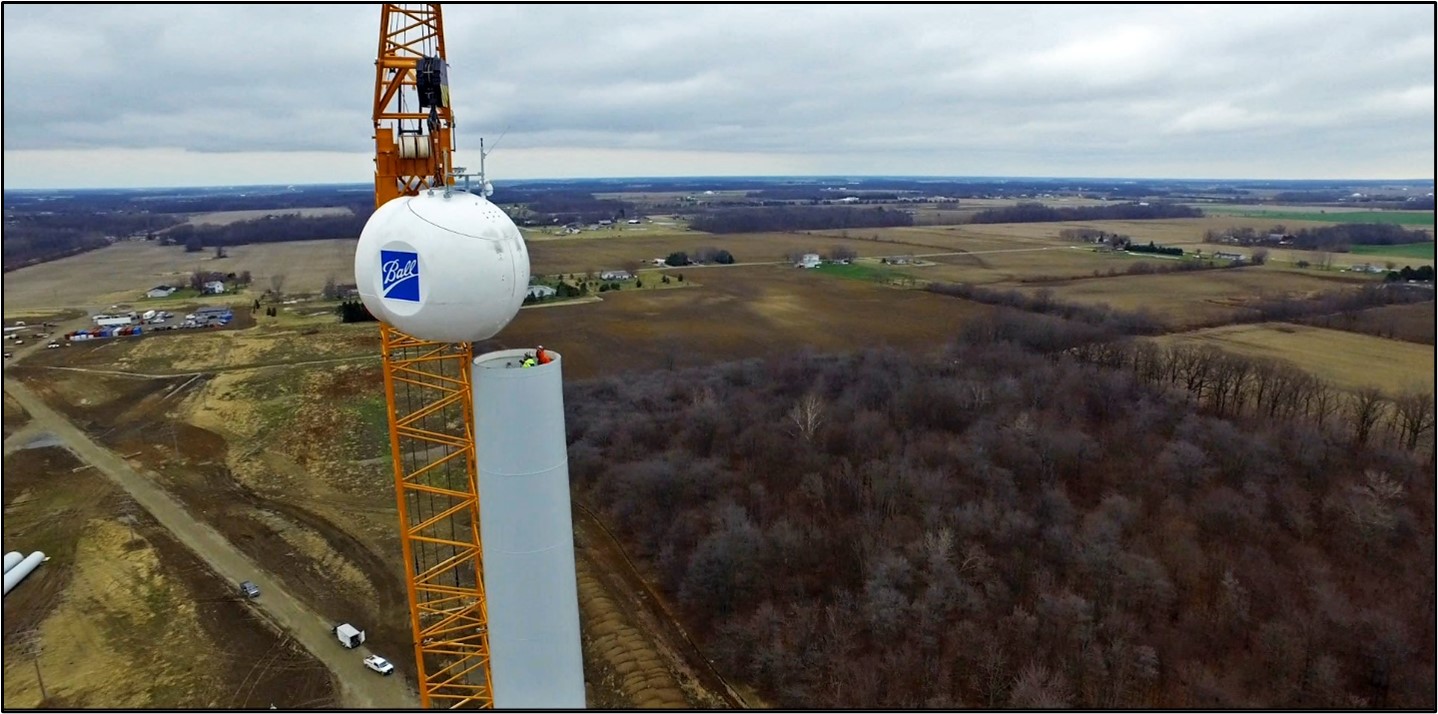
Magnetism
Ever wonder why One Energy turbines have round nacelles rather than the rectangular ones often seen in large wind farms?
That’s because of our generators! All turbines One Energy has installed to date have Permanent Magnet Direct Drive (sometimes called “PMDD”) generators. They contain magnets that create a rotating magnetic field.
This type of turbine takes advantage of a principle of magnetism: a magnetic field rotating around a wire creates an electric current.
Tower Stacking
For today’s homework questions, help us coordinate wind turbine tower stacking! Wind turbines are made up of different pieces, four of which come together as the “tower.” Read today’s word problem to find out how each tower section is carefully lifted into place with a crane and stacked on top of the previous section during construction – all without interfering with other components.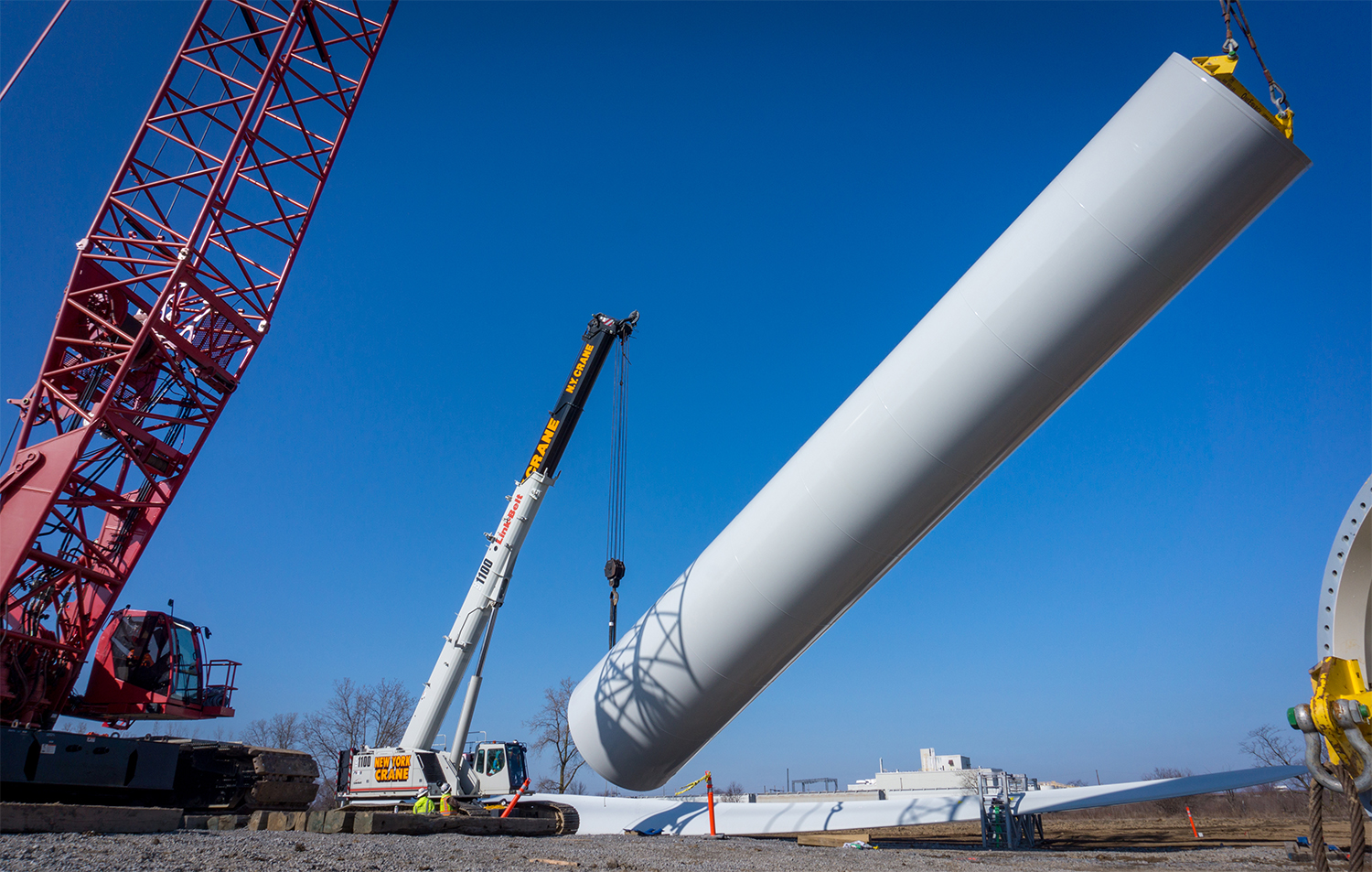
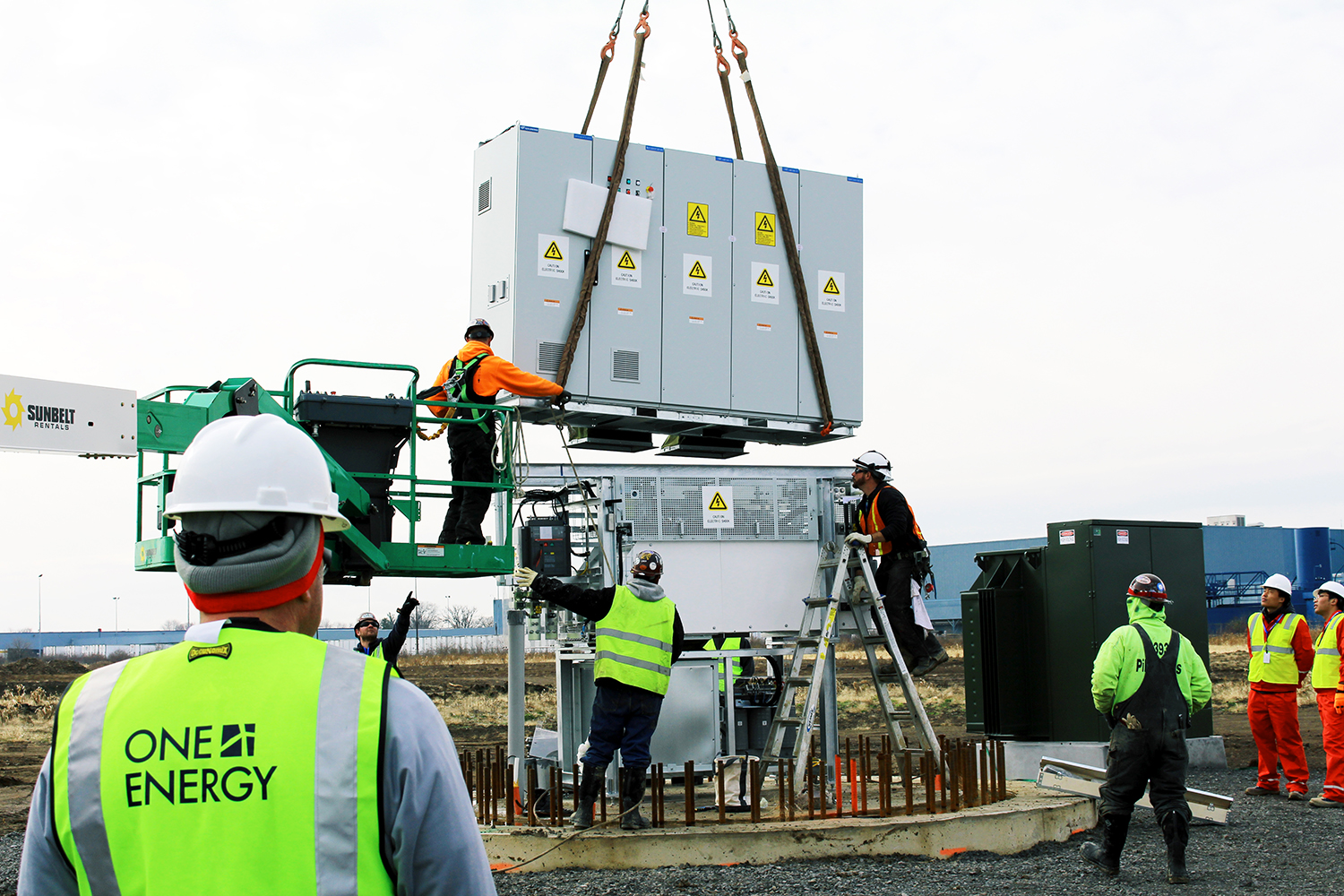
Rates & Timelines
In this week’s homework questions, we need your help scheduling our construction timeline!
To build Wind for Industry projects, One Energy uses what’s called a “linear construction model,” which means different crews are responsible for different stages of the construction process. Once one stage is completed, the next crew can begin their work on the following stage.
Capacity Factor
What’s a “capacity factor,” and what’s it got to do with wind energy?
In this week’s Wind Study, we’ll explain what the term capacity factor means, and how it relates to power production for potential Wind for Industry projects. After that, we’ll need your help solving two related math problems featuring capacity factors and percentages.
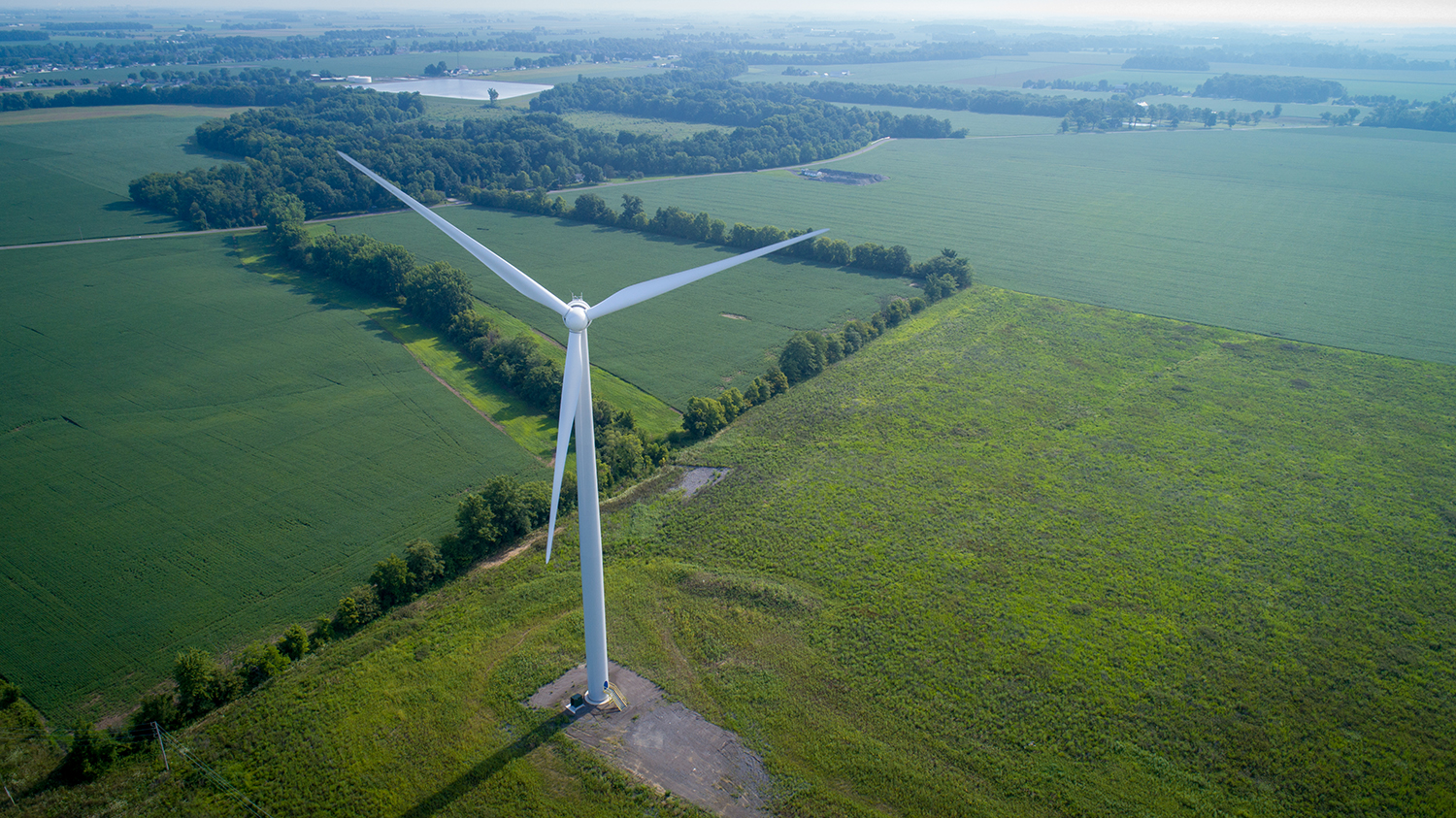
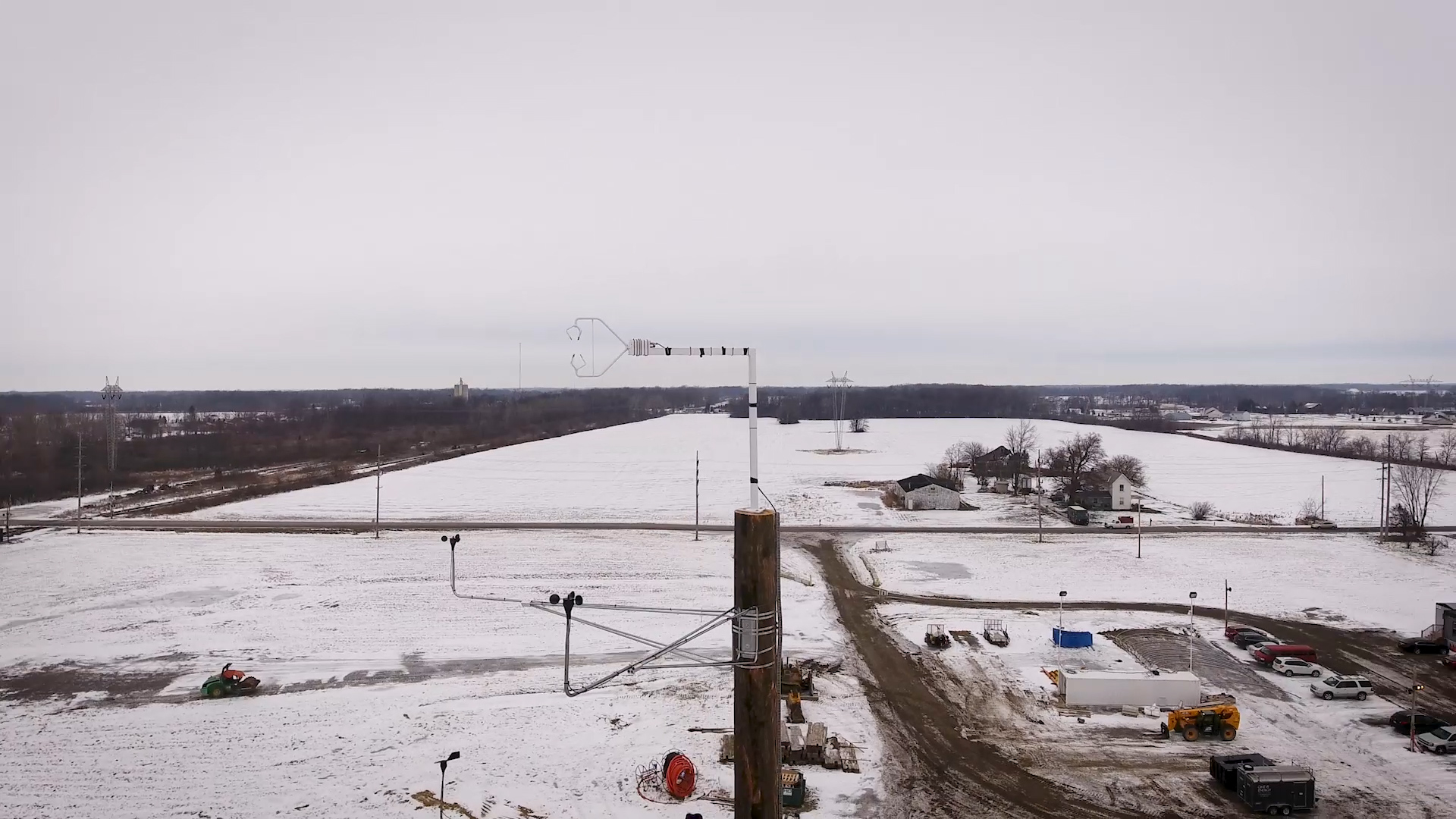
Binning & Extrapolation
When planning a Wind for Industry project, One Energy needs to know what the wind is like at the location where the potential project will be installed. To find this out, we conduct what’s called a wind resource assessment using data from a wind instrument, such as an anemometer (like the ones covered in this Science Shorts video posted earlier this month).
Using that wind data along with the manufacturer’s power curve, we’re able to calculate energy production at any given wind speed. We explained power curves in an earlier Wind Study (Q5 of 2021).
The problems? 1.) manufacturer-provided power curves use different increments than actual wind speeds, and 2.) anemometers are not as tall as wind turbines.
To solve these problems, we need your help rounding and sorting wind speeds into what we call “bins” (0.5 m/s increments) so the power curve from the manufacturer can be applied.
Then, we need you to adjust the wind data to represent wind speed at the height of a wind turbine’s “hub” (the top of the tower, where all the blades attach), instead of the anemometer’s height.
Net Present Value
As a company dealing in power and energy, economic inflation plays a role in our projects. The savings we’re able to offer Wind for Industry® customers are determined by considering the estimated energy production of the turbine(s), the rate the customer is currently paying their utility, and something called Net Present Value, or NPV.
In this week’s Wind Study, you’ll learn about the ways One Energy prices projects, and what NPV means for the value of a project over the course of its 20+ year life.
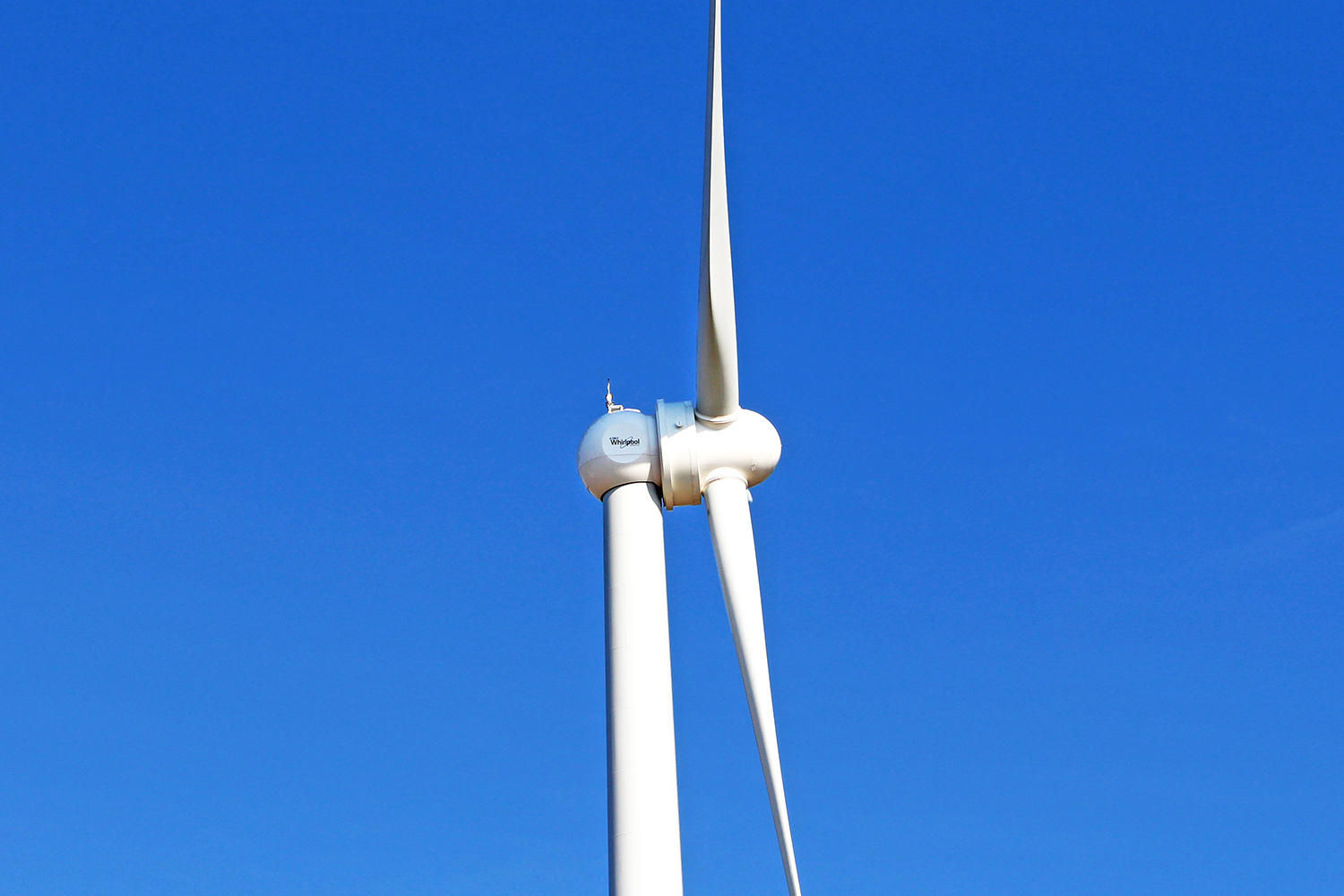
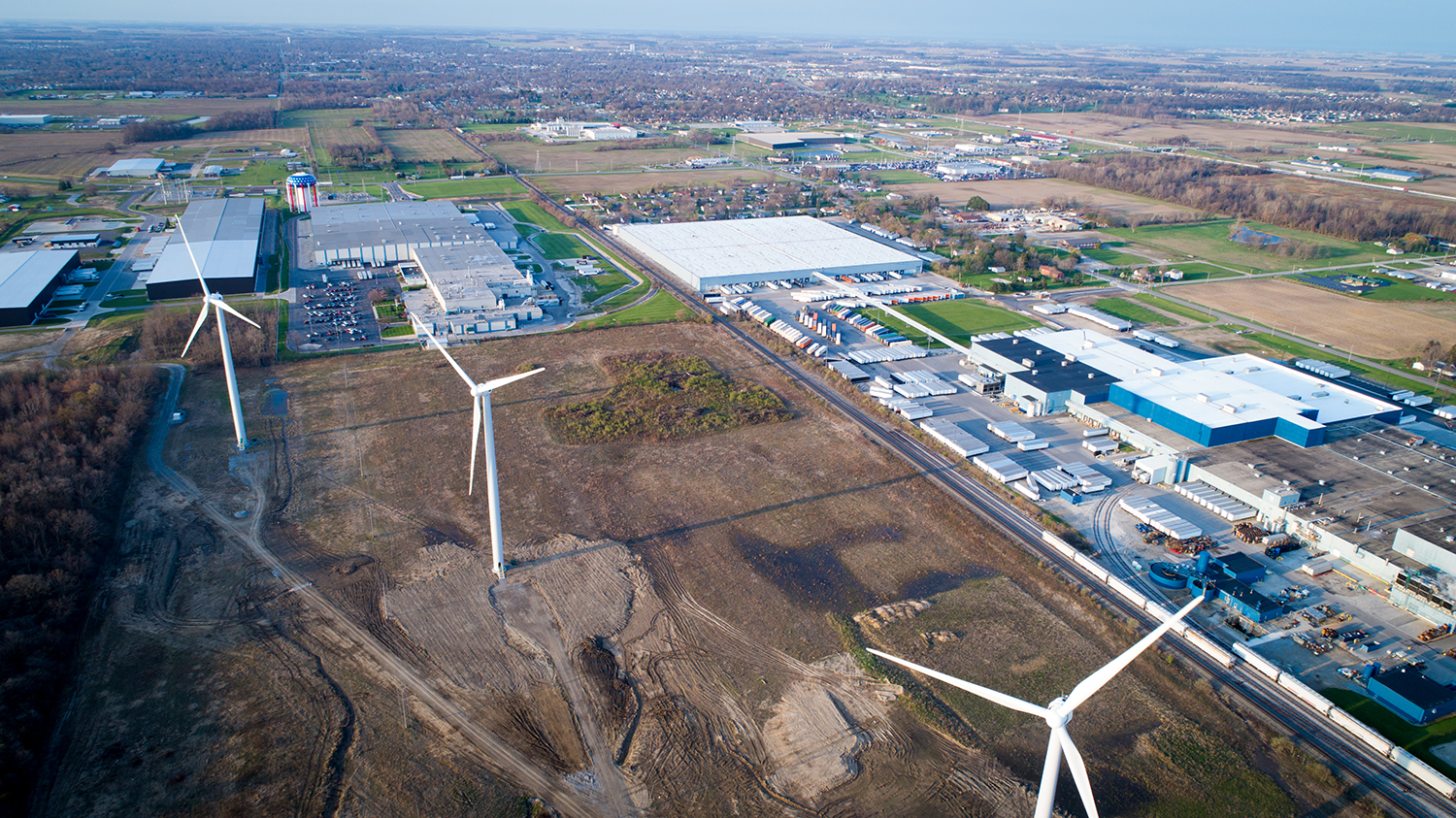
Net Metering
One Energy’s projects are different from typical wind farms because they are installed “behind the meter,” and directly power customer facilities. Some One Energy customers take advantage of a policy called net metering, which means the customer is only billed by the utility for the net electricity consumed by their facility. In this week’s Wind Study, learn more about how net metering works and use math (net values and percentages, specifically) to answer related homework questions.Megawatt Scholarship
Through our Megawatt Scholarship program, One Energy and participating customers award $5,000 per turbine per year to local students pursuing 2- or 4-year degrees in science, technology, engineering, and math (STEM) fields. And with the amount of projects we’ve installed, that’s a lot of scholarship money to keep track of! Help us track these funds for this week’s Wind Study homework!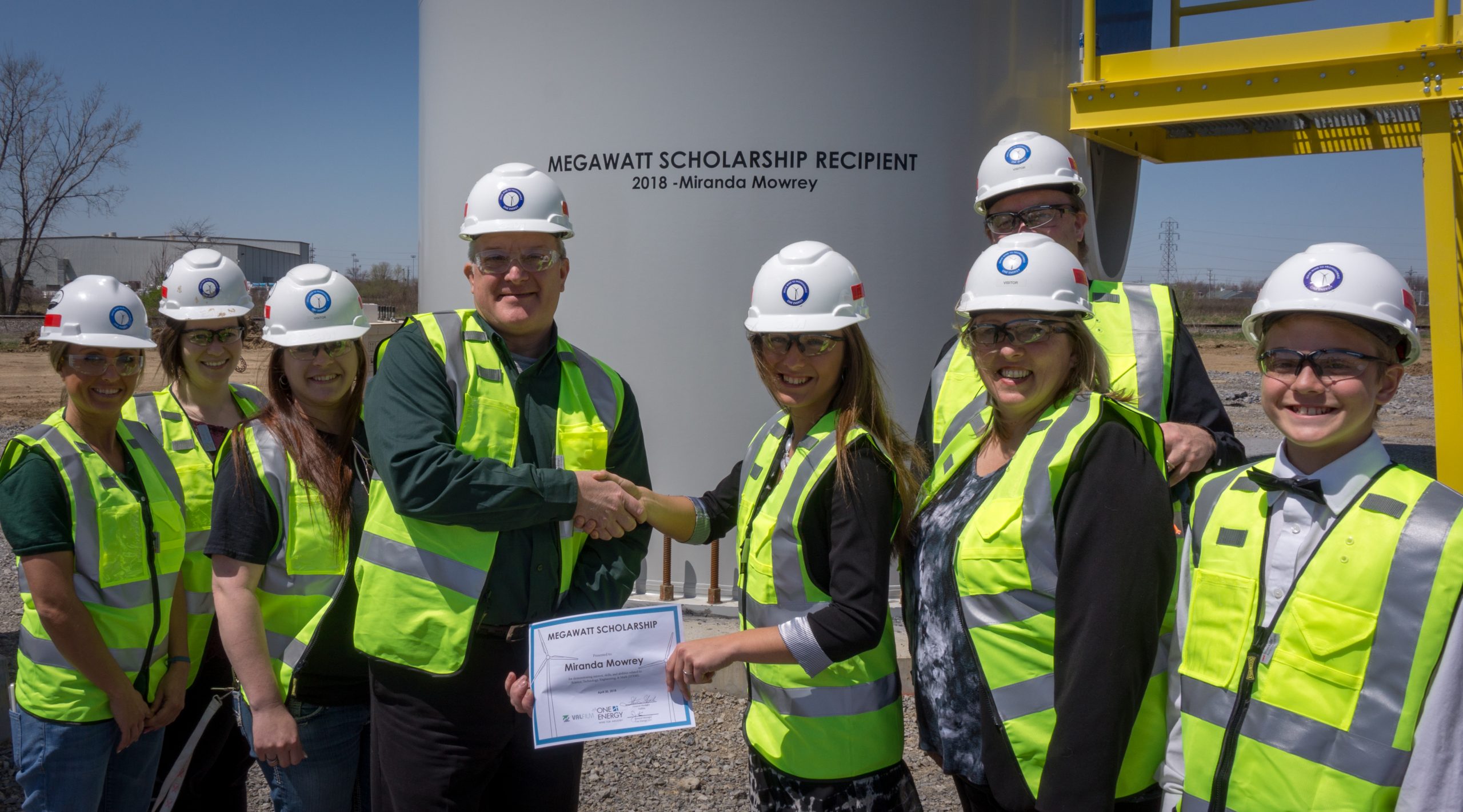
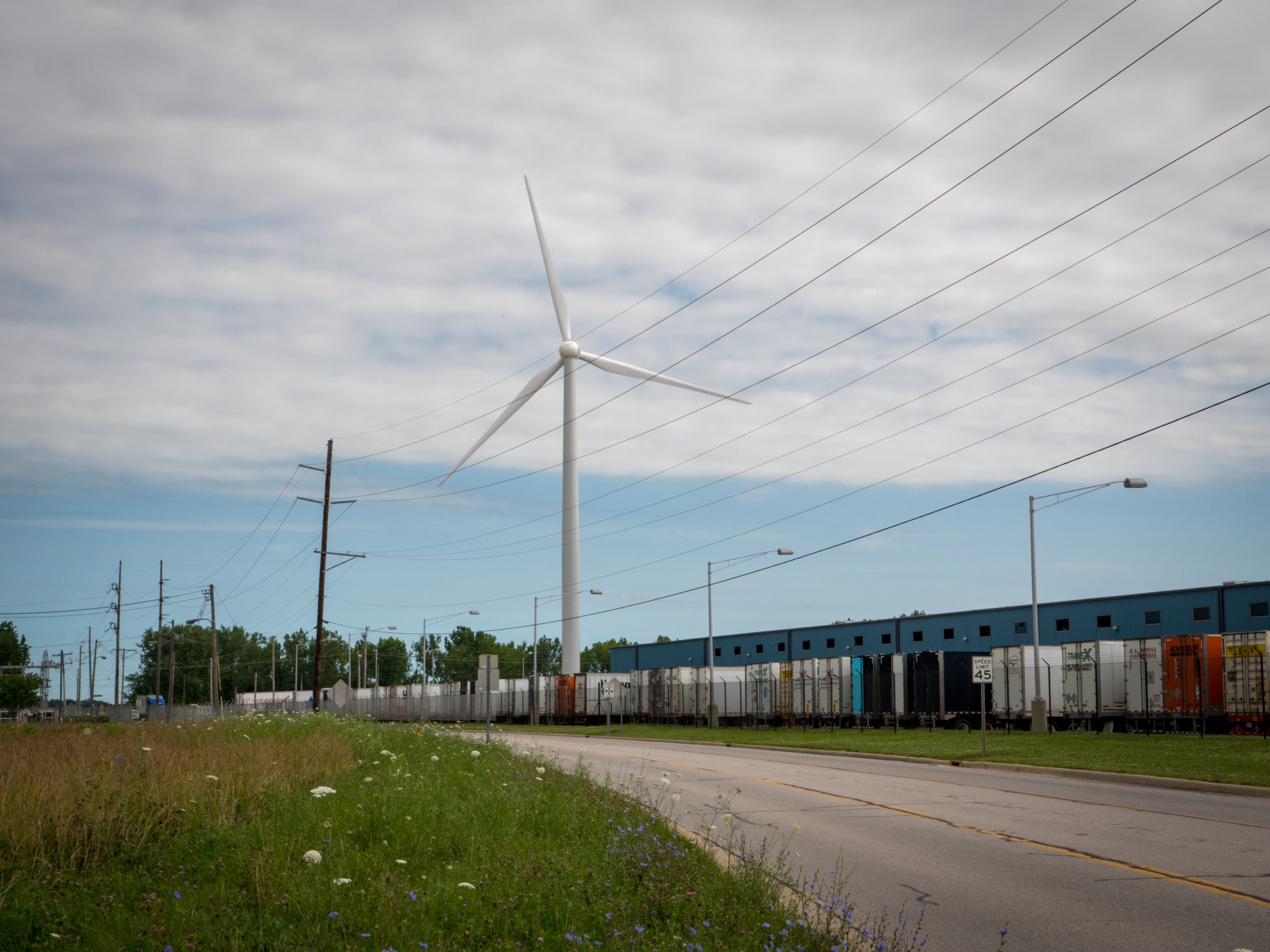
Applying Power Curve
In this week’s Wind Study, you get to play the role of wind turbine manufacturer!
When planning a Wind for Industry project, One Energy tells the customer how much of their facility’s power will likely be produced by the wind turbines we install at their location. To do this, we use what’s called the turbine power curve. Power curves are governed by the design of the turbine and are provided by its manufacturer.
As the manufacturer of this fictional wind turbine, we need YOU to plot the power curve on the graph provided in today’s homework. Then use the accompanying equation to calculate the power produced at a given wind speed.
P-Values
For this week’s Wind Study, we’re asking you to take the next step in determining a Wind for Industry project’s estimated energy production!
Earlier this month, you calculated the Net AEP (Annual Energy Production) by considering a project’s wake loss. Now, help us account for other potential losses and uncertainties, like downtime due to maintenance or grid issues. You’ll use P-Values and scale factors to solve these problems.
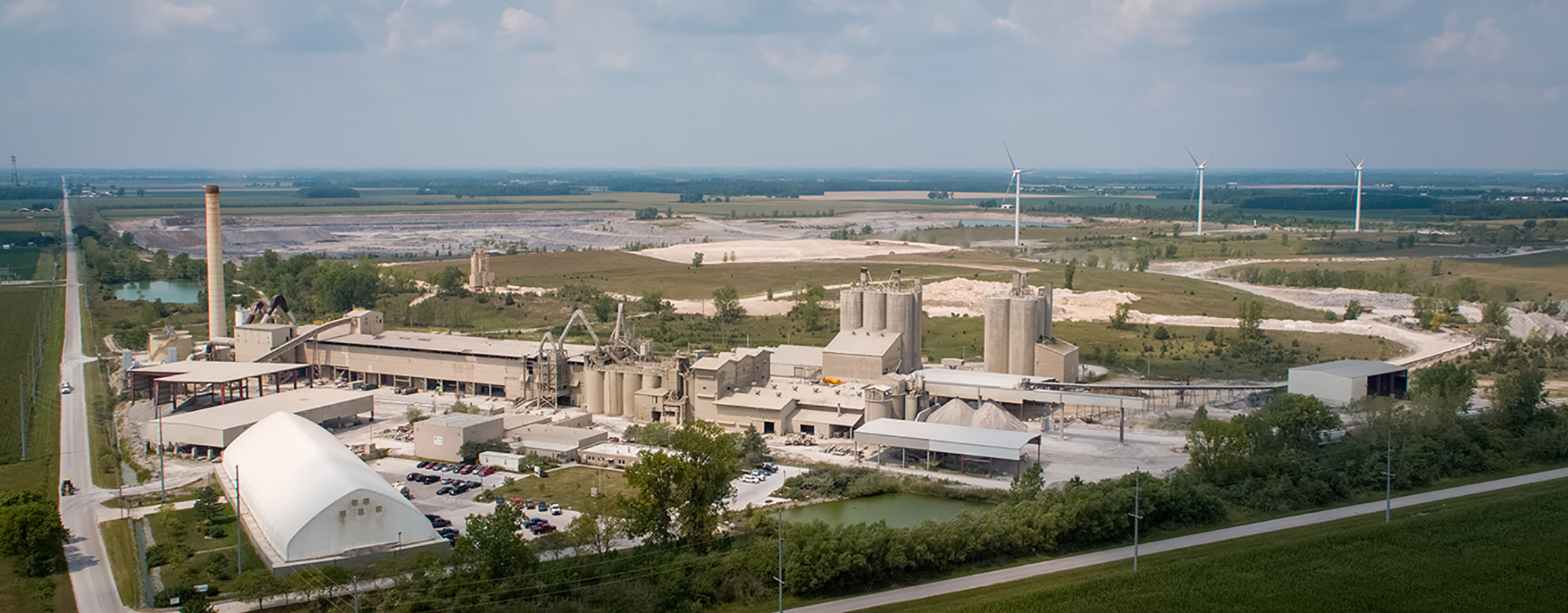
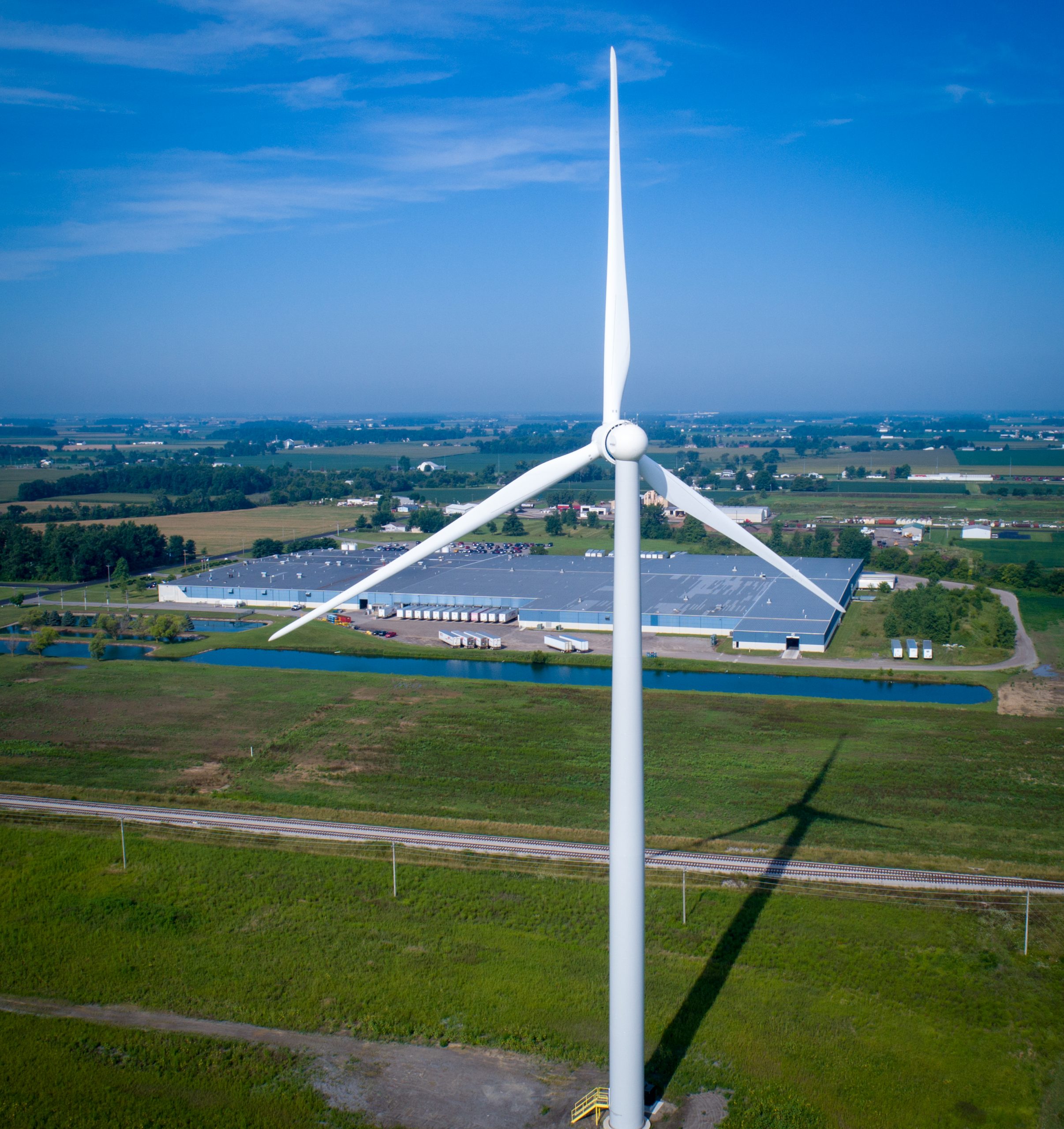
Power vs. Energy
In a previous episode of our Science Shorts, we learned about the difference between “energy” and “power.”
In today’s Wind Study, we’ll be applying the concepts of energy (the ability to do work) and power (the rate at which work is done) to One Energy’s Wind for Industry projects. Take a moment to review the concepts of energy and power by watching our short video here.
Wake Loss
This week’s Wind Study question uses math and percentages to solve two homework problems related to turbine siting, wake loss, and energy production. We’ll need your help determining estimated energy production values, on both an annual basis and for a particular month. (But don’t worry – this week’s question has all the information you’ll need to calculate these values!)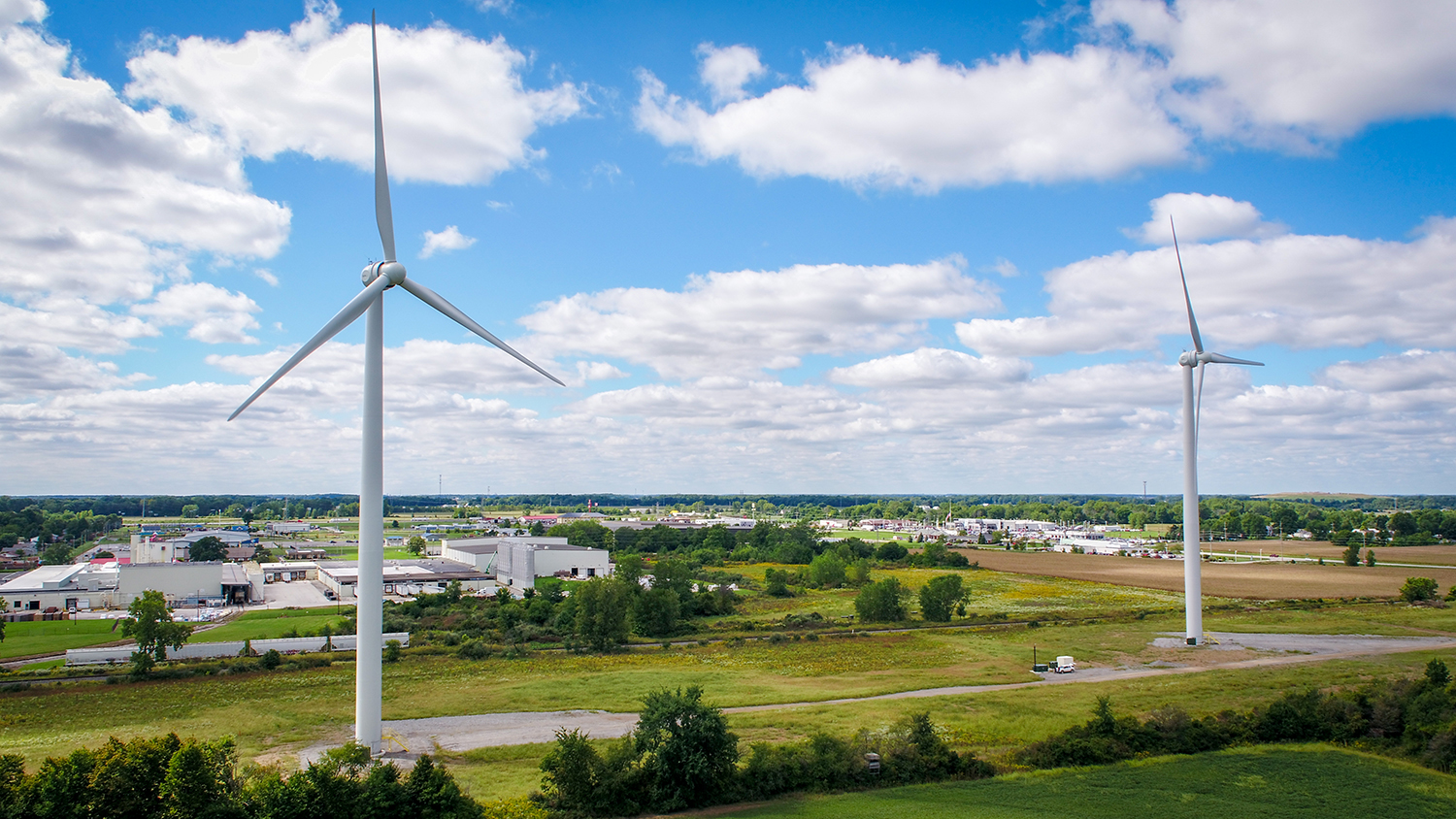
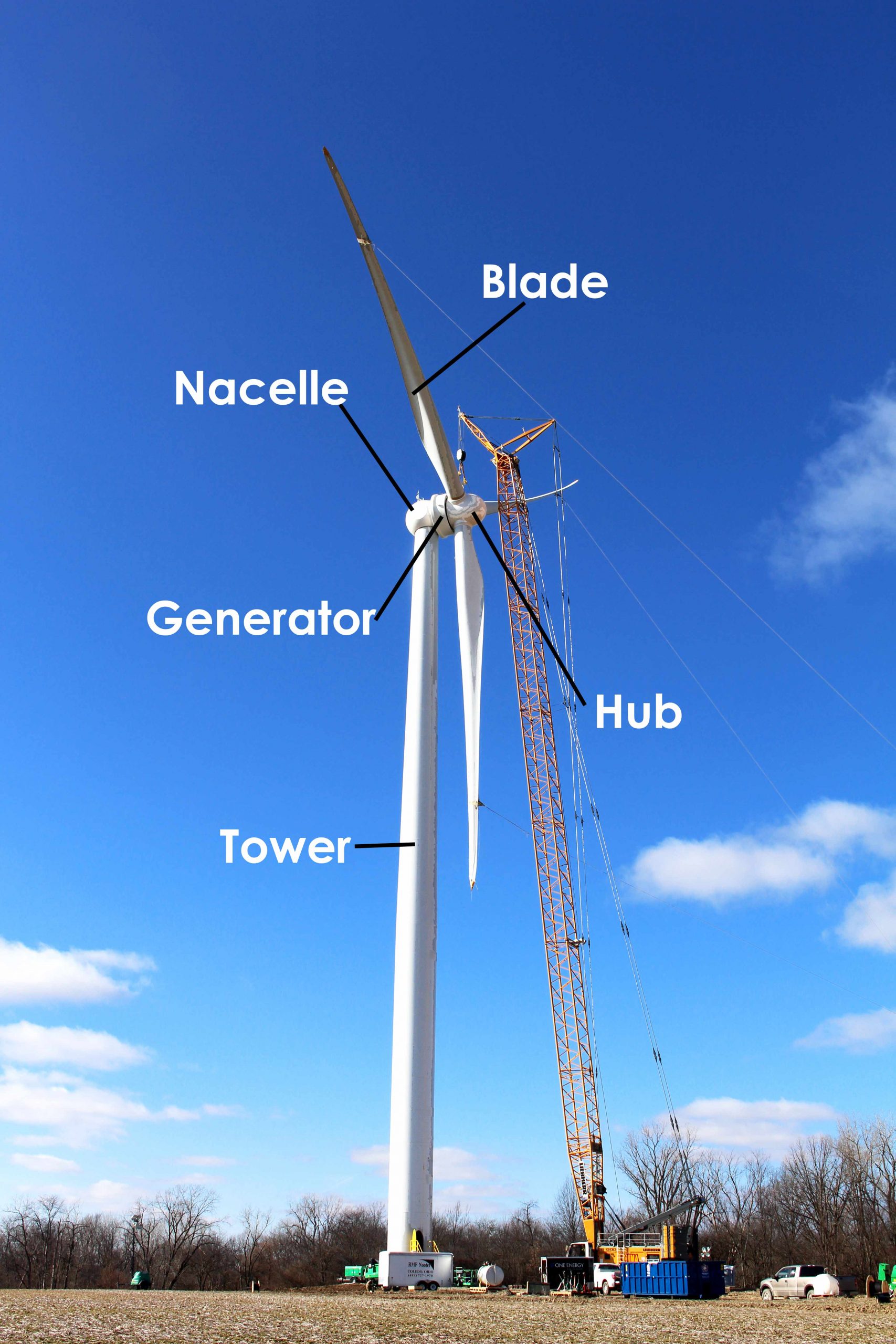
Shipping Components
One Energy’s wind turbines feature components (such as tower sections, blades, hub, generator, and nacelle) that must travel to our turbine yard located in Findlay, Ohio. In this week’s question, we need your help to determine how long it will take for certain components to arrive, as well as the average speed a component is traveling.2020 Wind Study Q&As
Division Tables
This week, we need help with division and tables!
One Energy designs Wind for Industry projects so that our customers’ facilities are net consumers from the electric grid. This means that we size our projects to ensure the wind turbines do not produce more energy than the facility needs.
In this week’s Wind Study, use our sizing parameters to determine how many wind turbines we can install for a specific customer. We’ll also need to know how much of the facility’s energy will come from wind!
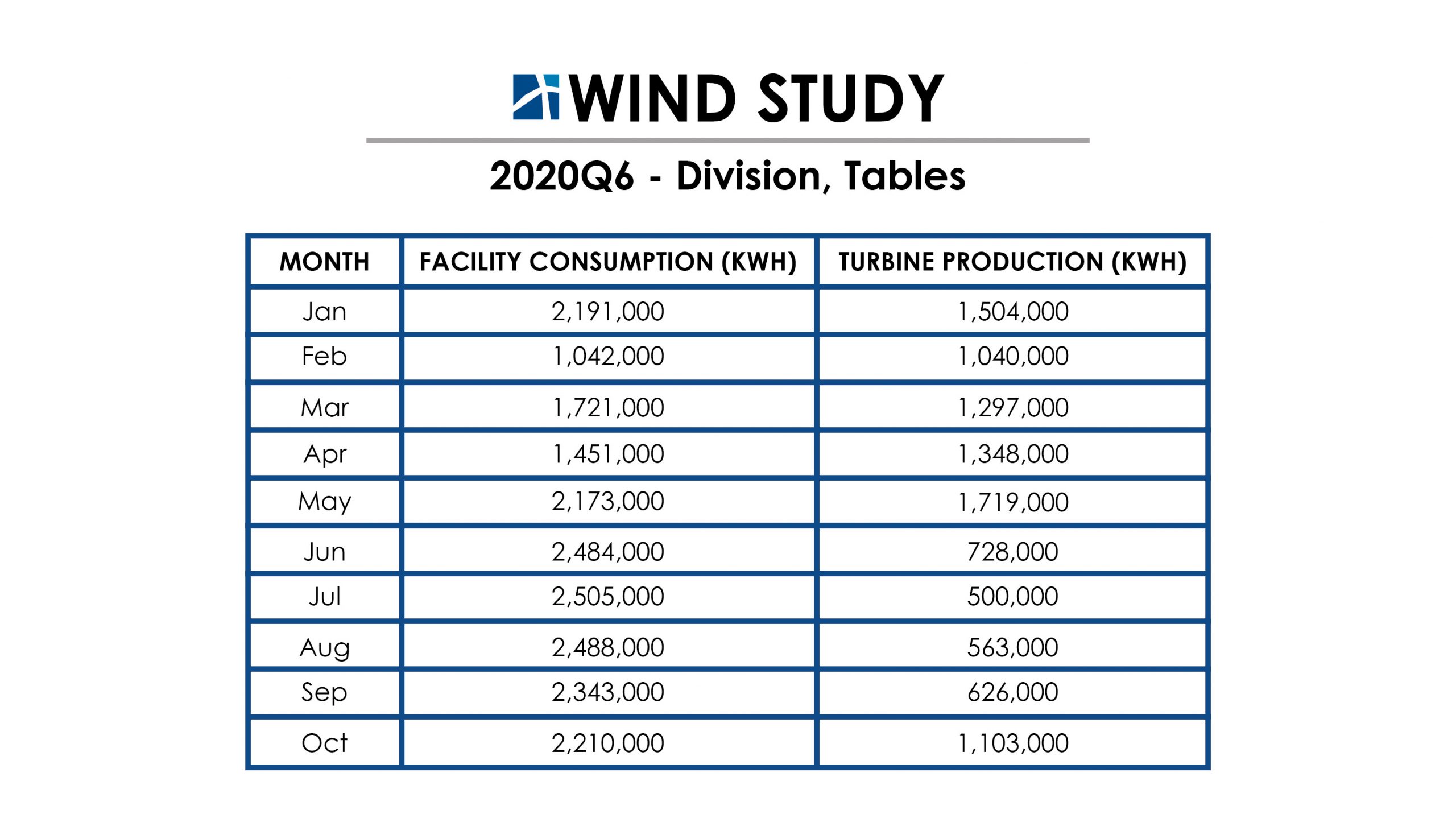
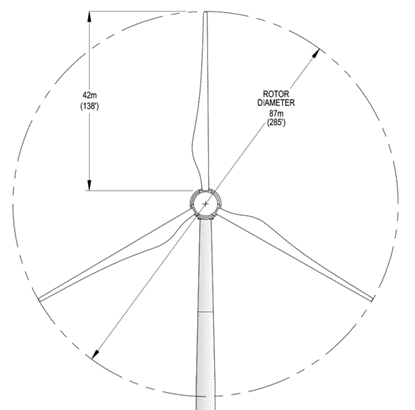
Blade Tip Speed
When the North Findlay Wind Campus turbines are generating at full capacity, they complete 16 rotations per minute (RPM), which means the maximum tip speed is 163 mph. But what’s the tip speed of the blades when there are fewer rotations per minute?
Use the diagram, dimensions, and formula in today’s activity to calculate tip speed and rotor swept area, and check the answers to see if you got it right!
Tables & Metrics
In this week’s Wind Study we’re talking tables, metrics, and cranes capable of lifting hundreds of thousands of pounds!
To construct wind turbines, One Energy uses a crane to lift and install components, such as the generator pictured to the right (which weighs 101,200 pounds). For this week’s Wind Study, learn about “critical picks”, how to read tables and crane load charts, and help us answer two math problems about lifting components with a crane.
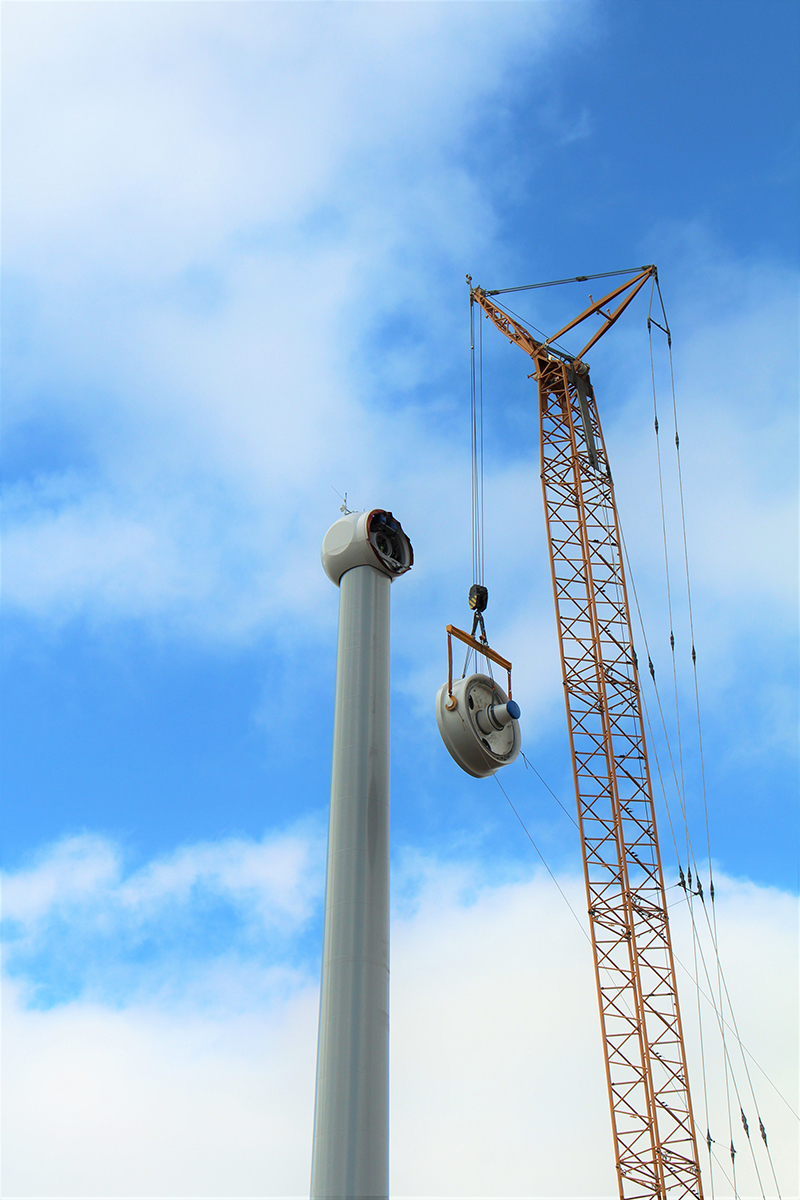
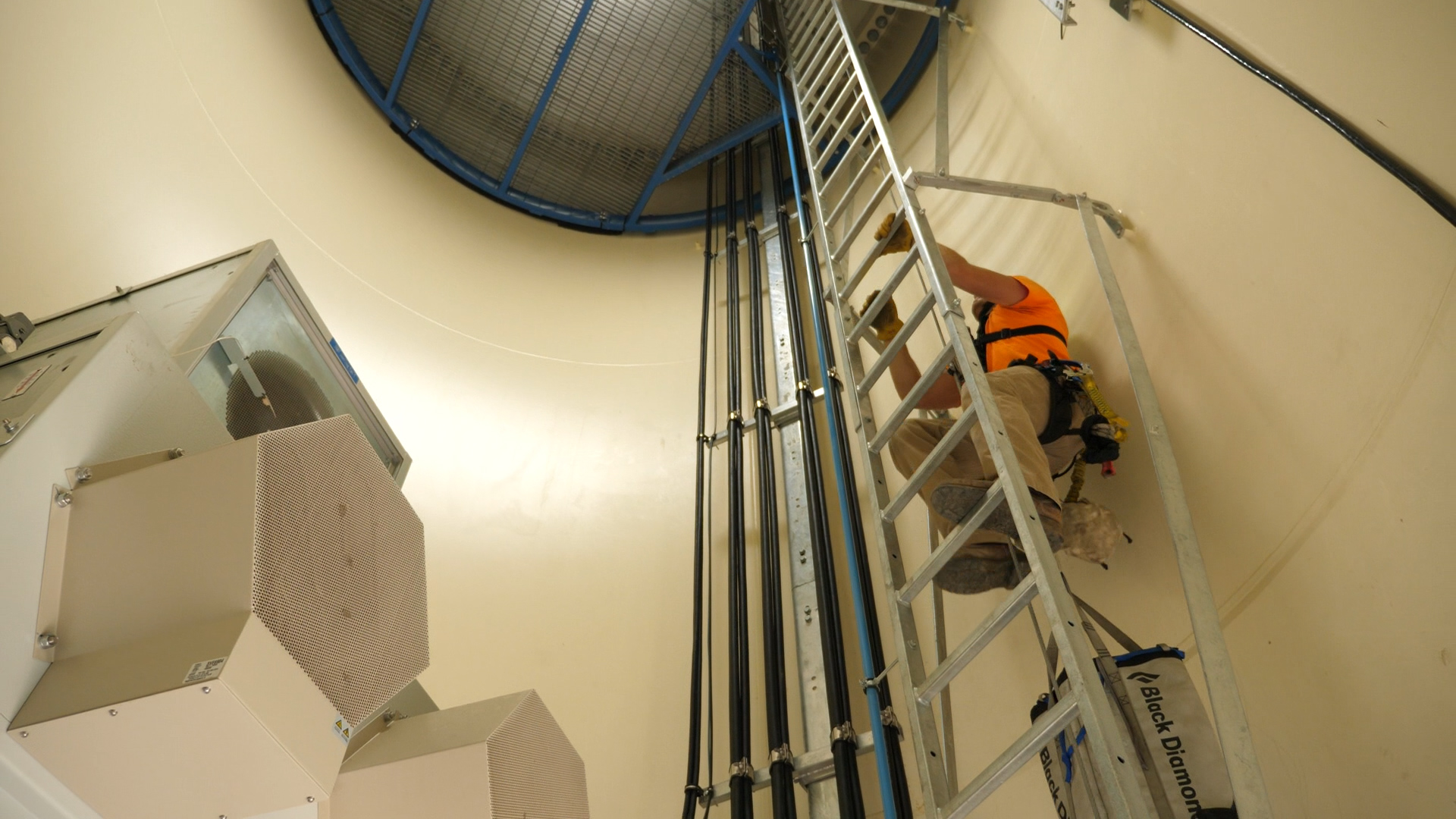
Geometric Rates
This week we’re talking 2-D geometry and rates.
One Energy’s wind turbines sit upon 80-meter-tall towers, which have a ladder that runs from the basement up to the top deck, just below the nacelle. Employees climb this ladder from time to time, in order to perform maintenance on the turbine. Help us determine the length of this ladder, as well as how long it will take our Technician Justin to climb it!
EMTs & Fractions
Time for another Wind Study – this time with fractions and permutations! We need help dividing our teams for work in remote areas, to ensure we have certified Emergency Medical Technicians on site.